Albania Part 2: Journey to Tirana and via the adventurous Valley of Devoll to Lake Ohrid
Bunkers, Isolated Valleys and Albanian Hospitality (12)
The next leg of our trip brought us from Skhodra to the Agriturismo Mrizi I Zanave in Fishte, where we were treated with an overnight stay and a dinner as part of our wedding present (thanks again!). The food was fantastic and we could watch the High Society of Tirana appreciating farm life in high-heels.
The gooses outside worked as a natural alarm clock and we continued early in the morning along quiet back roads through Albanian villages towards Tirana, always curiously looked at by the men in the Cafés. It was a pleasure to be on the road here and to have time to discover the little things. Some habits and rituals in Albania are based on superstition and have no correlation to religious beliefs. We couldn’t help but notice a teddy bear suicide – countless stuffed toys were hanging from houses and sometimes trees. They are called dordolec and should protect the homeowners from the evil eye. It was an unfamiliar concept to us, that a weather-beaten and smut-stained smurf guards a house safely against enviers. Maybe we should also attach a stuffed animal to our bicycles then for good luck? This is part of the reason we started this trip, to learn something new, to see different perspectives and sometimes to just quietly smile about certain peculiarities.
We cycled through a suburb outside Tirana just when the school was out and the streets were full of teenagers. They waved at us and offered to push our bikes up the hill. We were warned not to visit Tirana (outside of Albania from the Albanians in general and within Albania form the big cities, the crime and the traffic in Tirana). We felt as safe as everywhere in Albania, but rush-hour traffic in Tirana was indeed something and for a while nothing moved and we had to squeeze us through between house walls and the long line of standing cars. In Albania we noticed that people often leave their car parked in the traffic lane with their indicators activated, so they don’t have to fight for a free parking space, and then they just leave to run their errands. But for us cyclers, this is just horrible, because you never know if there’s someone in the car just waiting to start driving or if it’s really just a parked car. Building a metro in Tirana would be a big relief for all the commuters. We only steadily reached the city center and our hostel in the evening.
Pyramids and Bunkers in Tirana
We spent three nights in Tirana (population about 895’160) and discovered the city. And this capital is definitely not a beauty and lacks the “charming old town-vibe”, but it’s vibrant, full of young people and very interesting to explore. The turbulent history left its mark in the city’s architecture. You see attractive Italian administration buildings next to Sovjet blocs. The oversized Skanderberg Square seems monumental in comparison to the side roads and is dotted by important landmarks such as the Clock Tower, the Et’hem-Bey-Mosque (undergoing maintenance during our visit), the National Opera or the National History Museum that is decorated with a huge mosaic depicting different times in Albanian history. A few meters further you feel in the middle of the Orient on the bazaar and in Biloku you can find many shops and fancy and creative bars and restaurants.
After the Pyramid it was time to go underground. There are two Bunker-Exhibitions in Tirana worth visiting. We decided to go to Bunk’Art 1, which is out of the center in a suburban area and about 20 minutes by bike from Skanderberg Square. Enver Hoxha kept his country isolated for four decades and as many of his comrades, the repressive dictator was paranoid and saw potential attacks looming just around the corner. He cut his ties with Yugoslavia, the Soviet Union and later on with China and grew disillusioned and was convinced that one day Albania will be attacked.
This paranoia combined with power and money led to the unprecedented building of bunkers. Between the years 1972 and 1983 about 173’371 were built. No one really counted them and the numbers vary according to the source. Most of the bunkers were constructed to have enough space for up to four Albanians and you can see them everywhere in the country (sometimes turned into wine cellars, stables, bars or used as billboards). The most important and biggest bunker areal was planned for Mr. Hoxha himself and his close allies. He got his inspiration for the bunker from a journey to North Korea (and another surprise) and started building an enormous bunker that can be visited now through the exhibition Bunk’Art 1. Enver only came here twice. In case of a nuclear (or any other) attack he would have ruled the country from here, so the bunker contains everything needed for that situation. What you can see today is utterly bizarre. Endless corridors lead to 106 rooms that run over five floors beneath the surface of Tirana, within an incredible 3000m2 space. You can visit the office and private room of Enver Hoxha or the big assembly hall planned for the central committee (now a concert and theatre hall). Everything was carefully designed to guarantee survival after the imminent attack. But the enemy never came.
Today tourists walk through the bunker and artists are inspired by the eerie atmosphere and use the bunker for art installations. We spent a couple hours in the dimly-lit hallways and were relieved to be back in the sun afterwards. We could tell you many more details about this bunker, but it would be too excessive for now. Just a small anecdote on the side: as everything was planned in detail, this included gas masks especially designed for horses that were tested during an emergency drill. This is definitely a visit we won’t forget anytime soon.
Our next visit was more upbeat, we cycled to the small garage of the Bike Doctor. We still didn’t have a new tire for Dario’s bicycle and the friendly young men at the repair shop was very helpful. He immediately called his friends and asked around if anyone would have a suitable Schwalbe tire. The answer was no, but at least we tried. He gave us two inner tubes for free instead. And again, we were touched by the incredible generosity.
All together we had a good time in Tirana, despite the cloudy weather. The city has got an intriguing mixture of new and old and is vibrating with life. It is always interesting for us to visit the biggest city and to experience the modern face of a country. This is a nice contrast to our rides through little villages and stunning landscapes. After a city visit, we always look forward to the countryside and camping in the nature and after a couple of days in the middle of nowhere we enjoy urban life just the same. The mixture is the essence and you don’t have to wait long to discover something completely different in Albania.
Of Lakes and Oil Fields
We left Tirana after three days and followed a road through the mountains which offered some great views of the valley behind. But the sky turned darker and soon it started pouring down heavily. We were able to quickly stop at a shabby roadside bar and drink a tea. We were soaked, but there was no infrastructure in this region and we put our tent up in an olive grove with lakeview. The next morning the sun came back and we could admire the beautiful landscape with various lakes and rolling hills.
Berat – the City of a Thousand Windows
After Kuçova the beautiful city of Berat (population about 65'000) was a real delight and for two days we explored the narrow alleys in the former Ottoman quarter Mangalemi and the former greek and Christian district Gorica on the other side of the Osumi river. The view of both sides from the bridge is probably the most photogenic spot in Berat, especially at sunset. The old town is part of the UNESCO-listed historic centers in Albania and our first historic city in Albania. Berat is known as the city of 1’000 windows and we soon discovered why, the white ottoman stone houses climb up the hill to the castle and they are built very close to each other and so it seems almost like the windows are watching you.
On top of a very steep hill sits Berat castle (Kala) which origins trace back to the 4th Century BC, but most structures you can see today are from the 13th Century when it was part of the Byzantine and later the Ottoman Empire. The vast citadel complex is comprised of cobble stone streets, byzantine churches, a mosque, an old cistern and the Onurfri Iconography Museum. This unique castle is still inhabited by locals who converted their homes into guesthouses or restaurants or still use them as their private residence. They used to carry all their supplies up the steep street, but now it is possible to drive up with a car. There was hardly anyone else around, a few children playing in the ruins and two horses. The Holy Trinity Church stands out and is a good example of the influence of the Byzantine Era and additionally from here you get amazing views over the Gorica district and the surrounding mountains. While walking we admired a garden and suddenly the owner arrived, smiled and gave us two Persimmons. Albania, you keep surprising us.
Apart from the old town, Berat held another highlight for us – Lili and his taverna. In the middle of the Mangalemi district is the entrance to Lili’s restaurant Homemade Food Lili and you sit in a small courtyard on a wooden table. There are only five dishes available, all of them unpretentious but absolutely delicious (try the fergese and the eggplants when you’re there!). But the real highlight is Lili himself, his hospitality makes this place special, he serves his guests with so much passion and calls everyone by their names that it is the real entertainment. The most important part of the dinner experience is the so called “Rakia time”. Guess you can imagine where this goes. Let’s say, it is easy to start a conversation with the other travelers around and you soon start to feel like a family dining together. We had to come back the next day, since a place like Lili’s is hard to find anywhere else.
Through the adventurous Devoll-Valley to Lake Ohrid
We listened to the recommendation from another cycle tourer and decided for the road less traveled along the river Devoll for our trip towards Lake Ohrid. The route north of the city of Elbasan would have been more efficient, but since when do we want to travel as fast as possible? The remote area around the river Devoll looked very promising on the map. We drove back north from Berat to the provincial town of Gramsh, where we passed the last restaurants and modern cafés for the next 2,5 days. After Gramsh it was getting lonelier and the landscape more spectacular. There were some villages on the route, but no super market. Some villagers gave us fruits along the way. There was also a small apple booth and we wanted to buy two apples, but the vendor just smiled and gave them to us for free. Another time, an older woman gave us a bag full of fresh grapes without saying a word. We tried to communicate with our limited Albanian phrases and gestures and it worked that way.
Although the gas station attendant looked a little lost, when we stopped with our bicycles and asked for gas. But we explained that is was for our cooking stove and then he wanted to know more about our planned route and he thought that the tour from Elbasan to Lake Ohrid would be much better… well, we’ll see.
Soon afterwards we discovered a tortoise slowly crossing the street and Lisa got up from the bicycle, ran and saved it right on time from getting hit by a fast approaching truck. We placed it in the nearby forest next to another tortoise. We have never seen so many tortoises before as in Albania. Then our route got very exhausting with various slopes with signs showing 10%. There must have been a quantity discount for the 10% signs, because some sections were much steeper than that. This continued for more than 70 kilometers and when we almost reached the top, there were some mean winding roads waiting for us.
Additionally, it kept raining now and then and the whole day was very demanding (more mentally than physically though). After every slope there was another incredible view awaiting which makes you forget the struggle for a while. The landscape was just spectacular with a panorama over a blue artificial lake and the mountains in the background.
Finally, on the top we were rewarded with a great camping spot on a flower meadow under an apple tree and close to a fountain with fresh mountain water. We hung our mobile shower up in the tree, had a cold shower in the middle of a fantastic scenery and then it was time for a big plate of Pasta.
It rained during the night and the next morning our bicycles were soon covered in mud. Luckily, we could wash everything off at the fountain. The cleaning procedure of the panniers and the bicycles took some time and while waiting her turn Lisa noted the big information board next to the fountain, where it stated that we were in the middle of a national reserve, home to bears and wolves. Good that we know this only now, at least we were able to sleep peacefully. Of course, we didn’t encounter the announced wildlife. We drove through dense forest down to the river and ended back on dirt roads again. After two long hours we reached a hamlet and were looking forward to some breakfast. The local men tend to sit around in the cafés for hours, drinking strong Turkish coffee but no one ever seems to eat. We tried or luck anyways and asked for some cheese and bread. The owner of the coffee nodded and left for about half an hour, only to return with fresh bread and cheese baked in the oven. He must have gone home to get fresh ingredients from his family. We were so grateful at that moment. After 2,5 days out in the nature we were so happy about the little things, such as bread and cheese. After another two hours we reached Maliq where we found a bakery and could get a much needed cookie resupply.
We drove the last kilometers through Albania and arrived in the holiday town Pogradec on Lake Ohrid. We were so hungry and were happy to find an Italian restaurant with a menu (!) and we ordered three courses and some wine and absolutely enjoyed that comfort after the last exhausting days. Shortly before the border to North Macedonia we passed two bunkers, saw flamingos in the Lake Ohrid and another leisurely passing tortoise on the road in the middle of Pogradec. Those were our last impressions of Albania, then it was time to cycle up the hill to our next border.

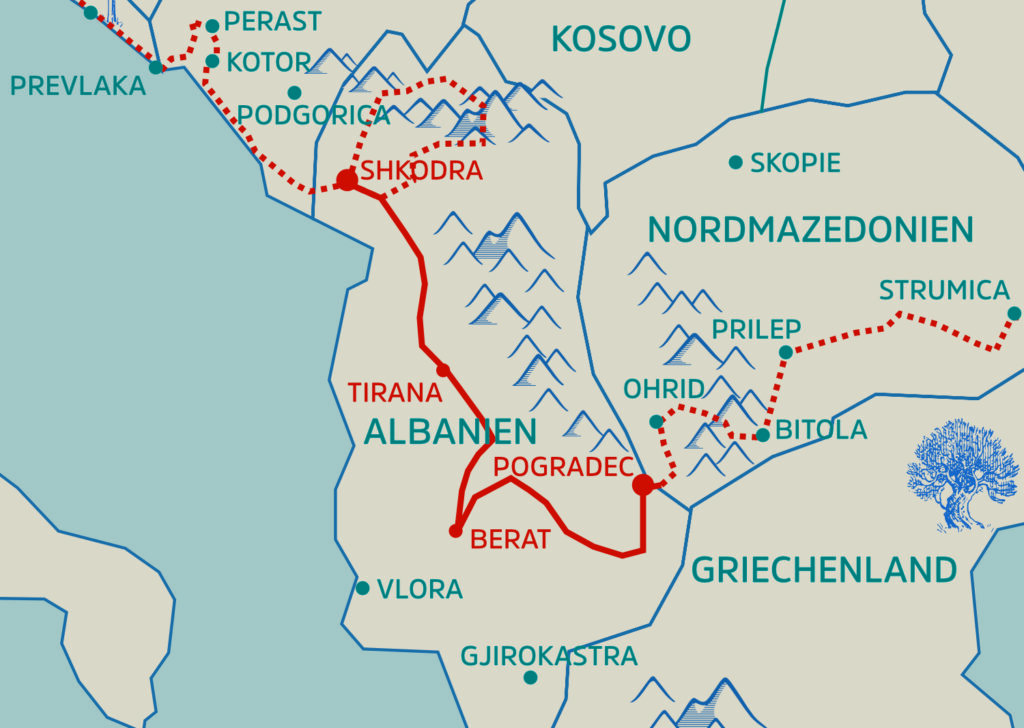
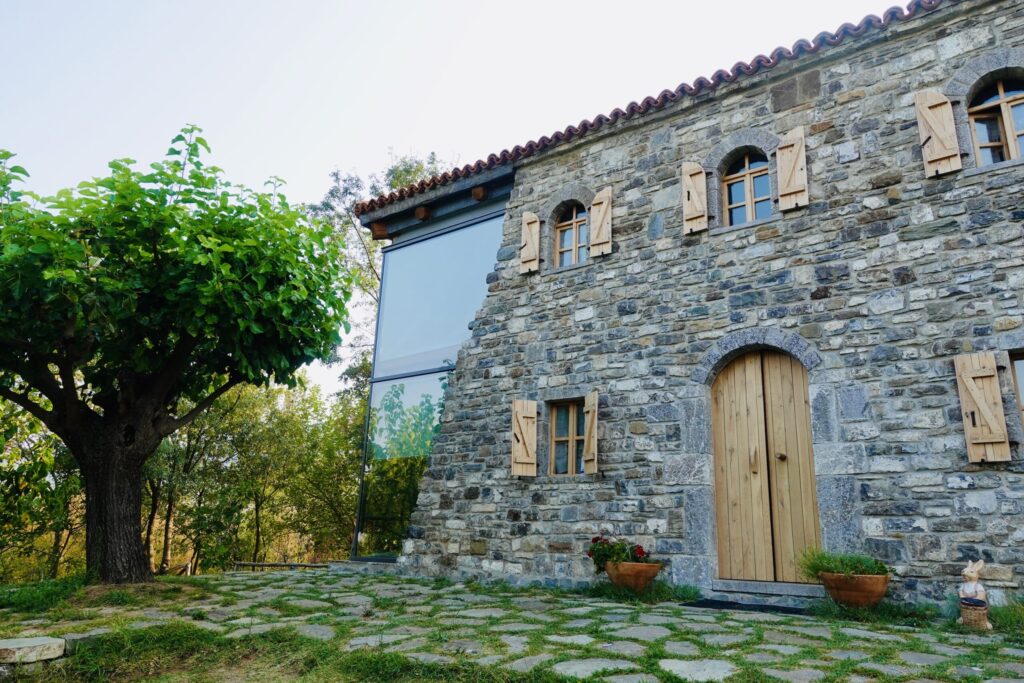

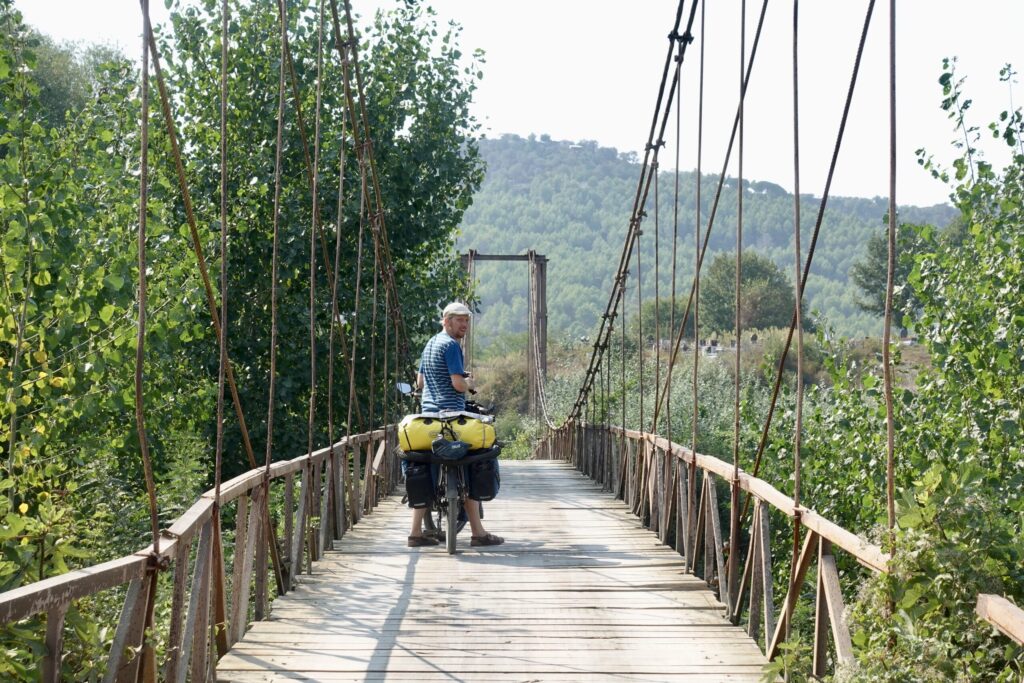
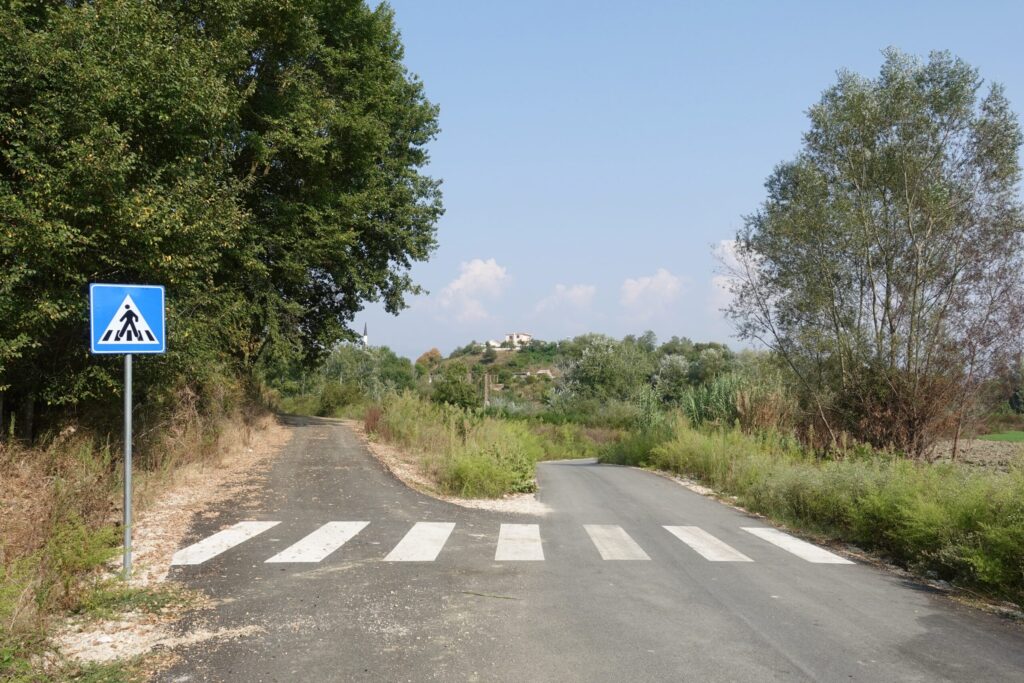
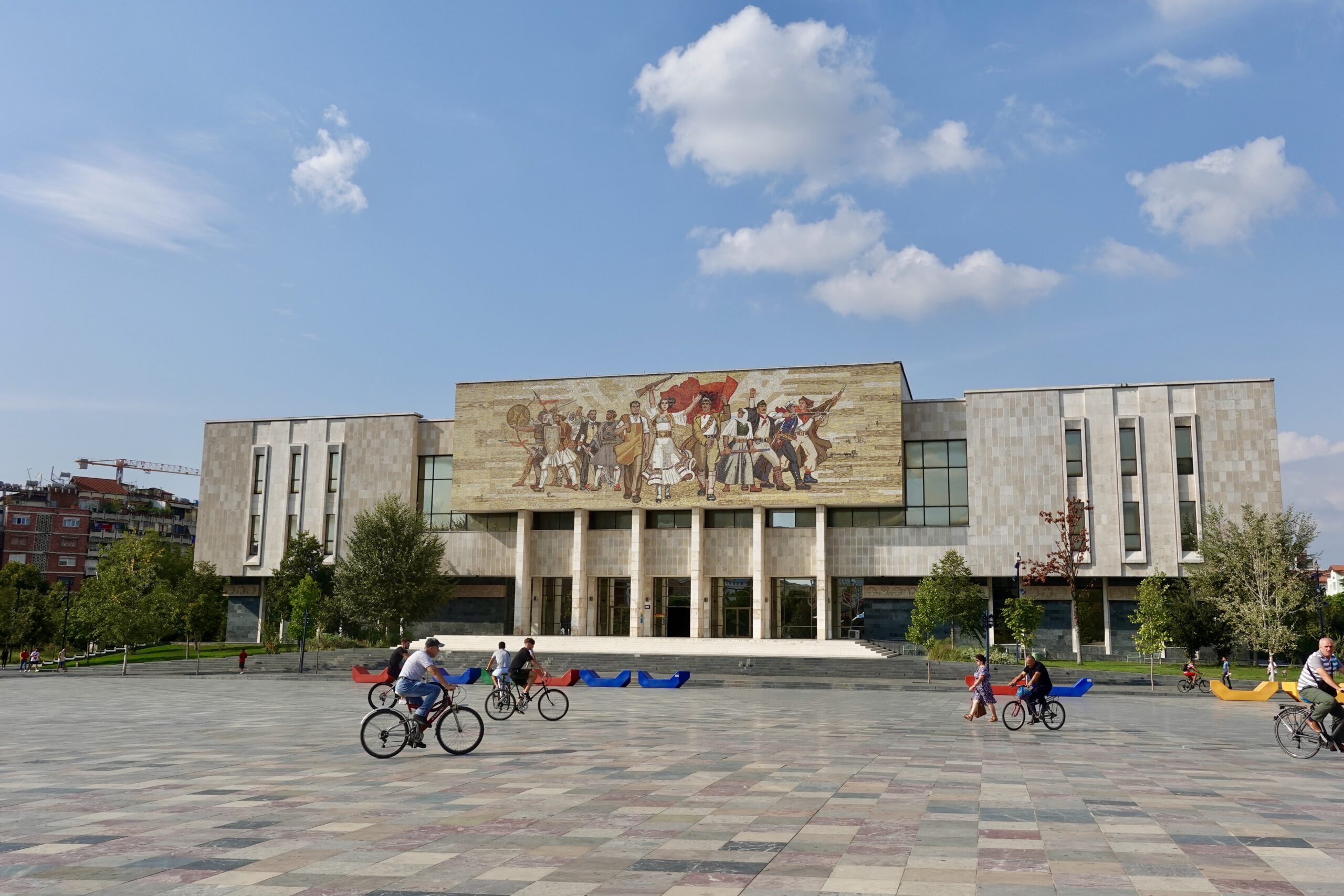
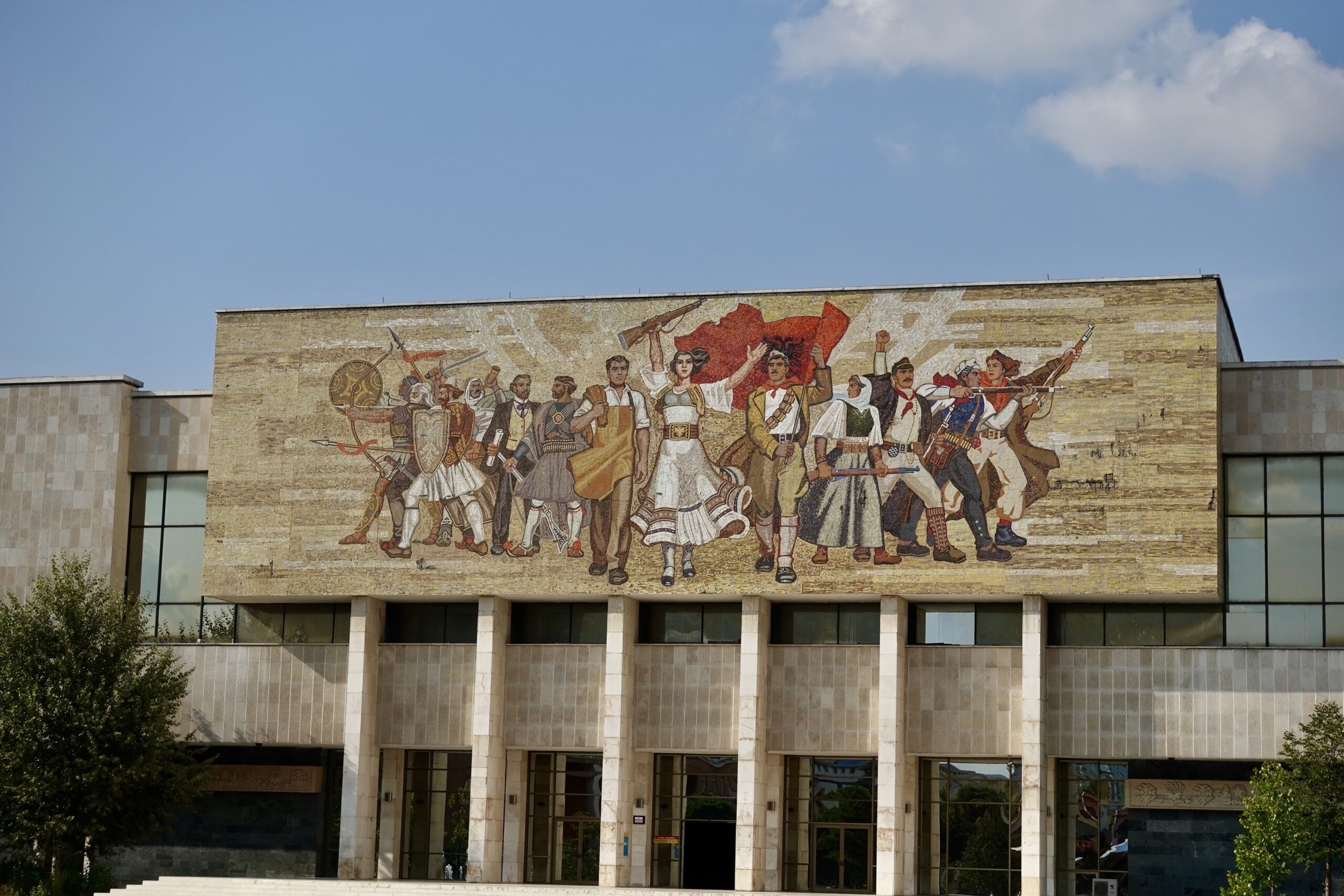
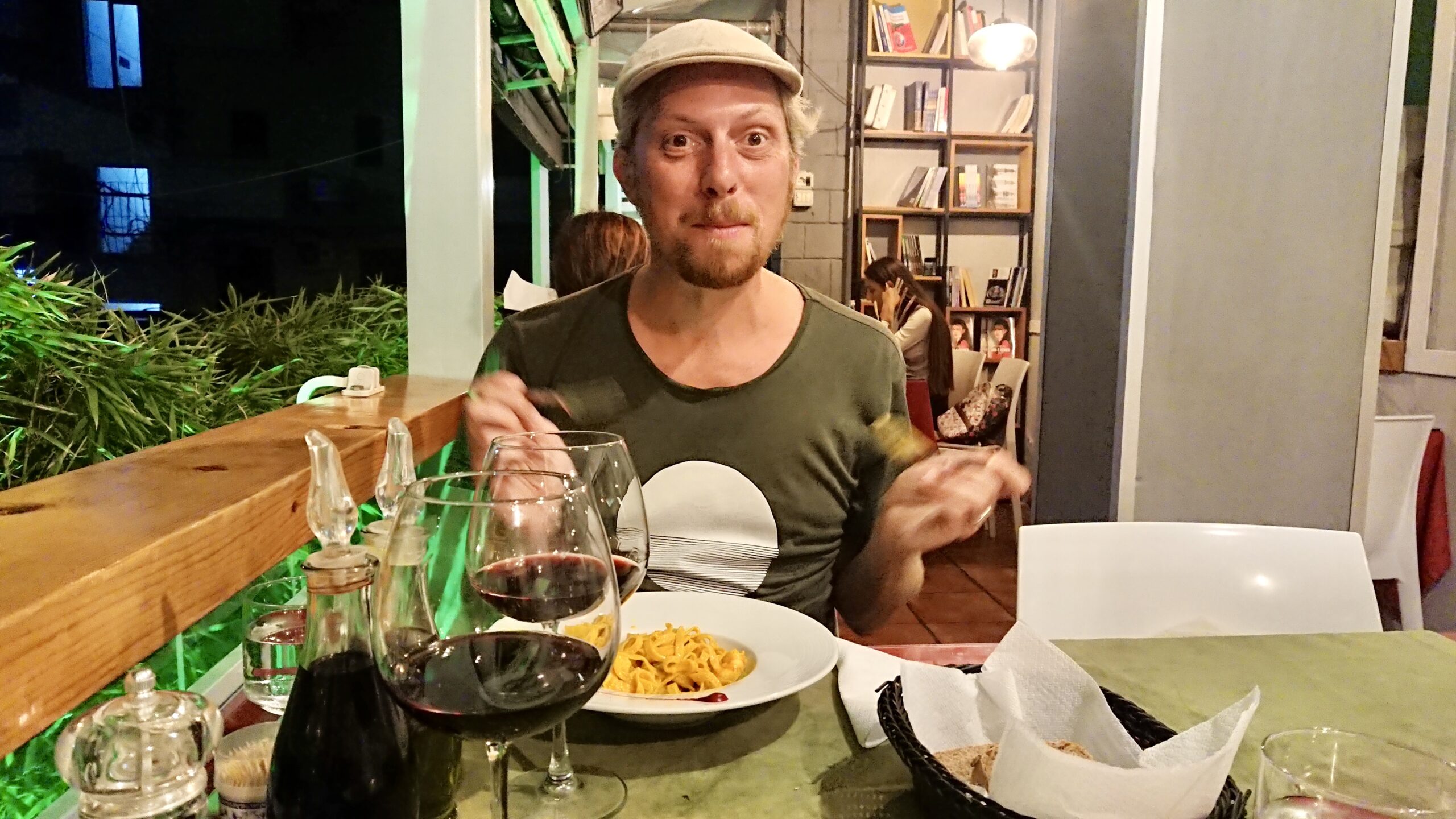
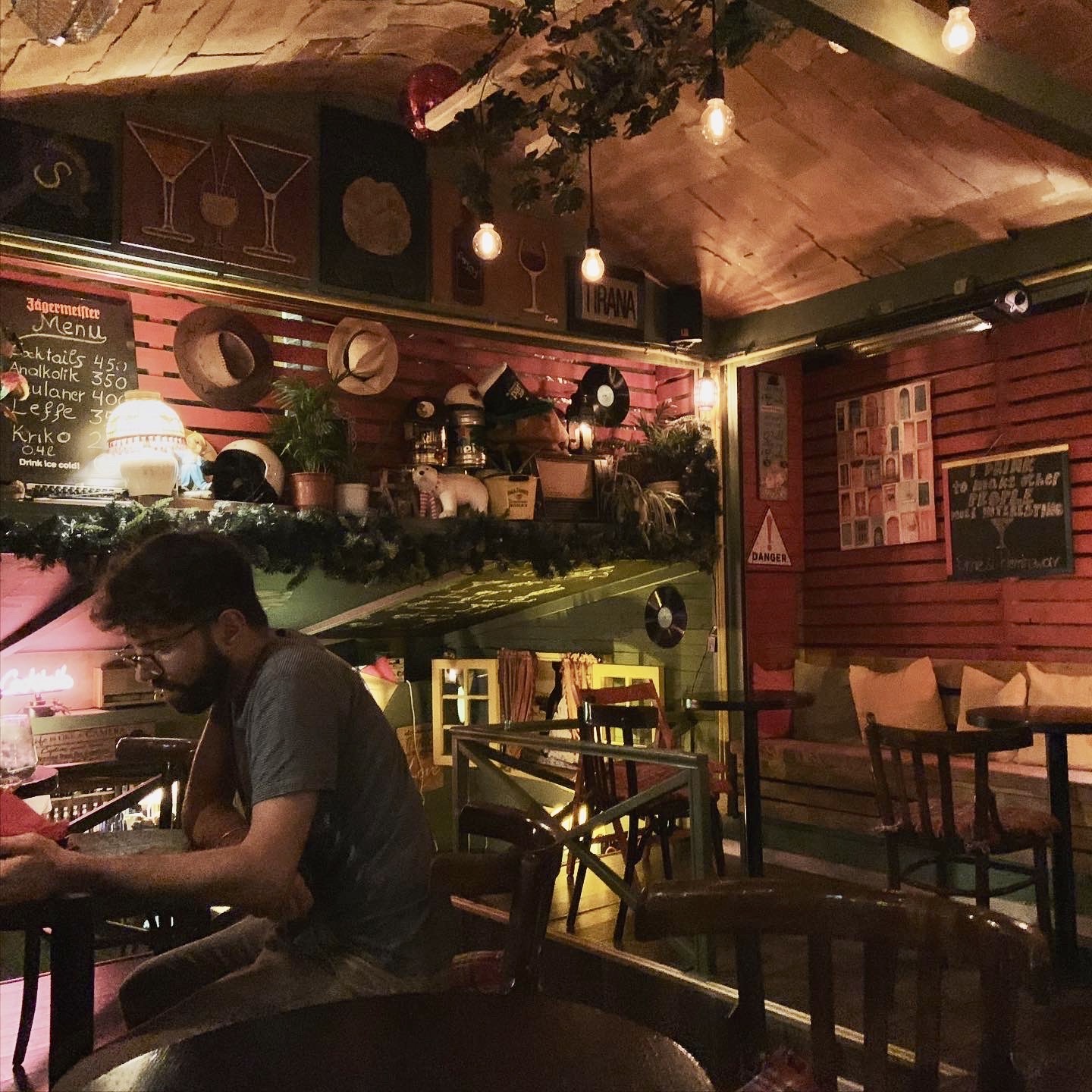
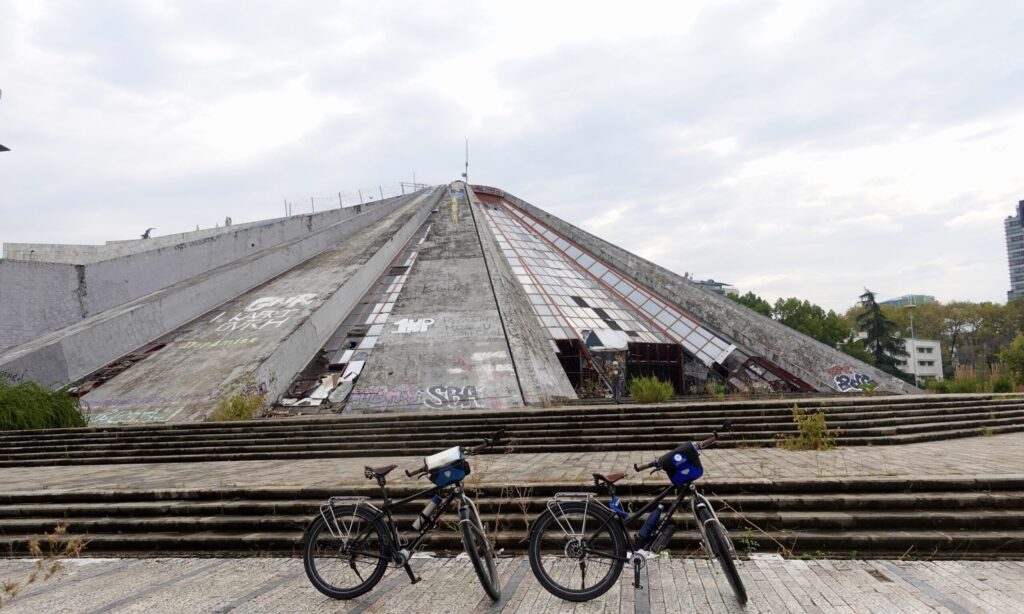
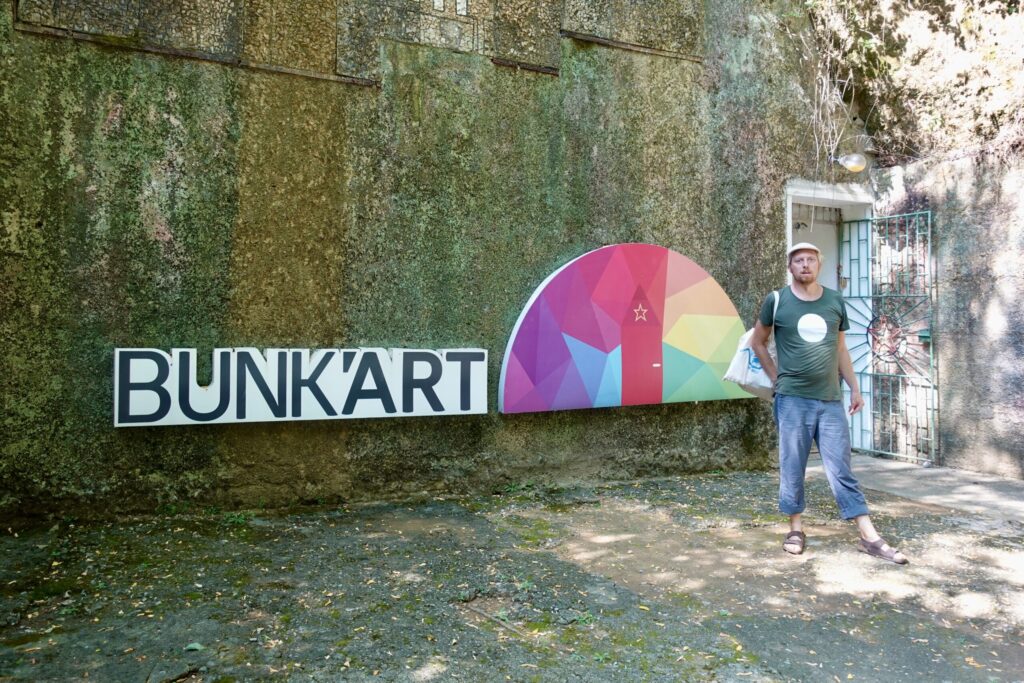
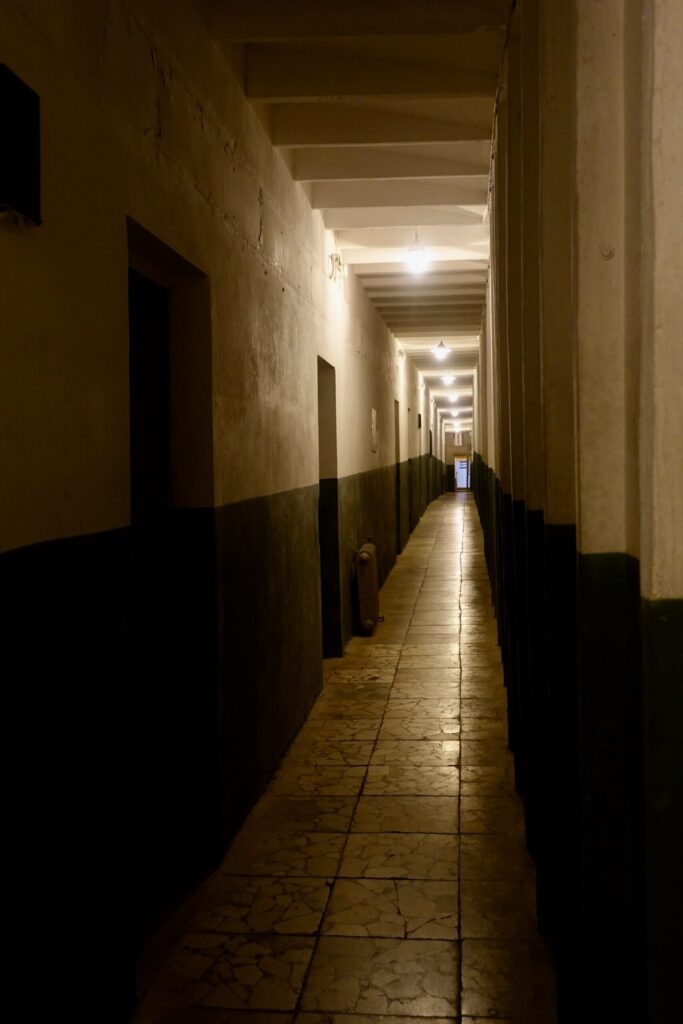
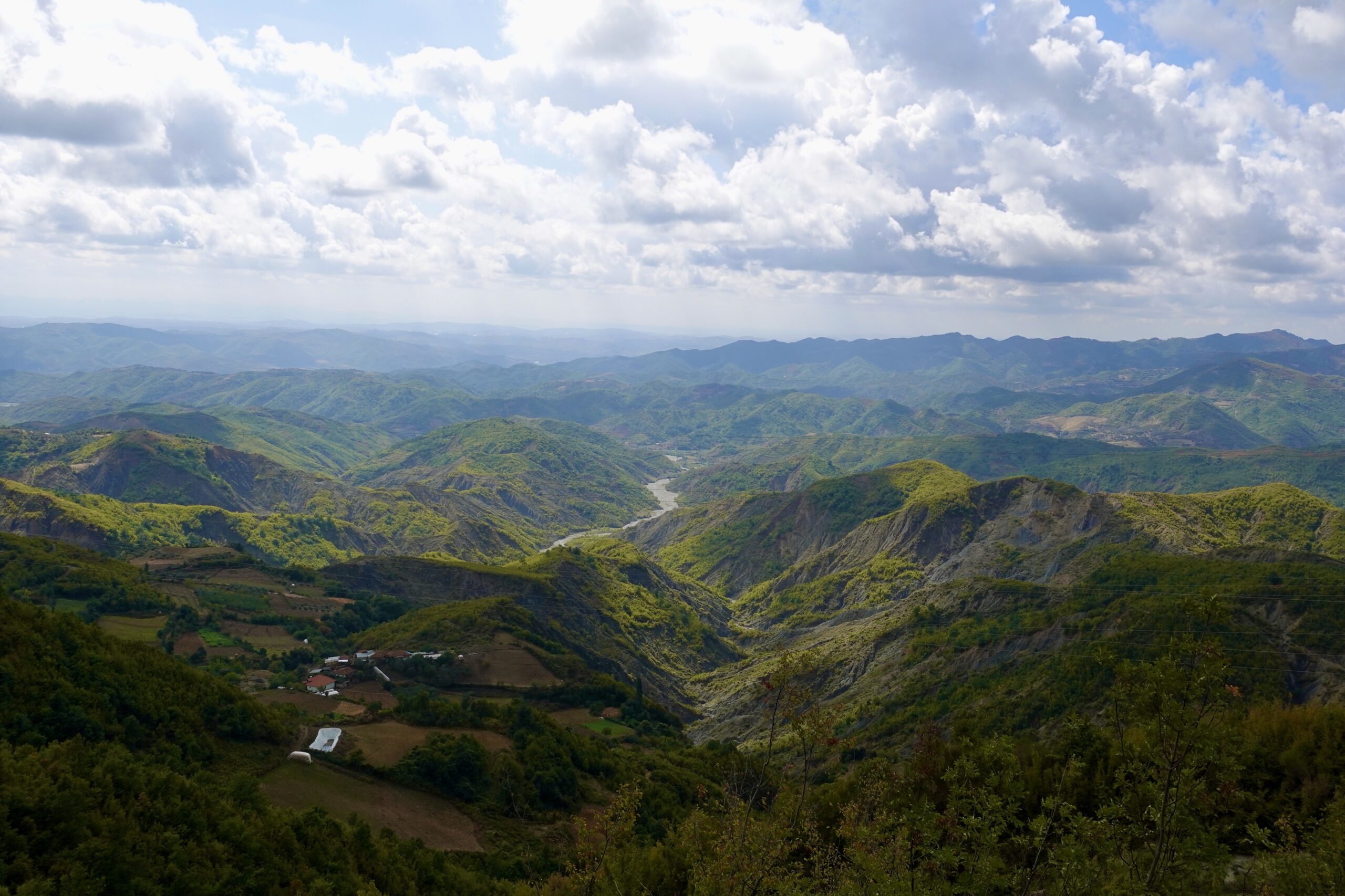
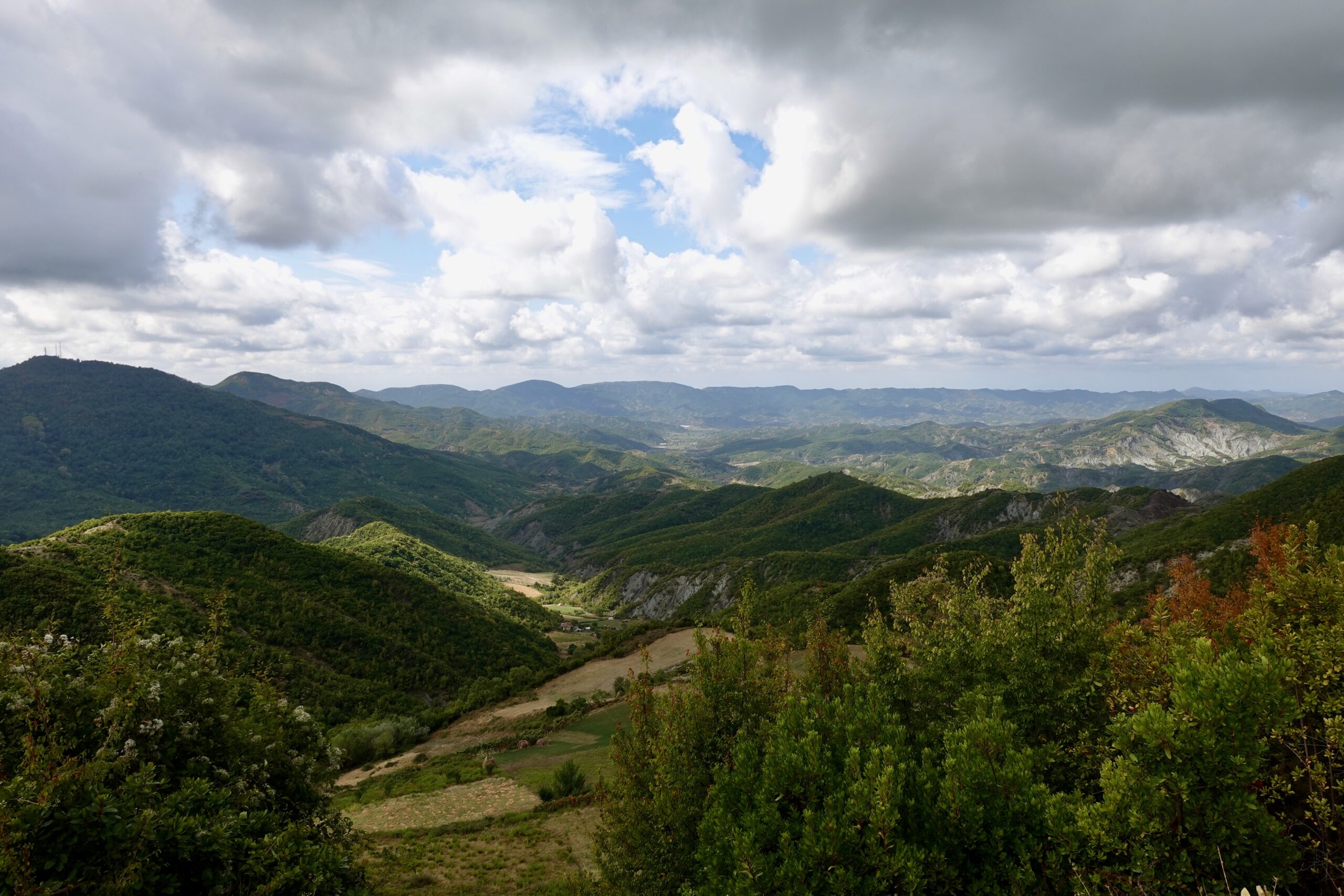

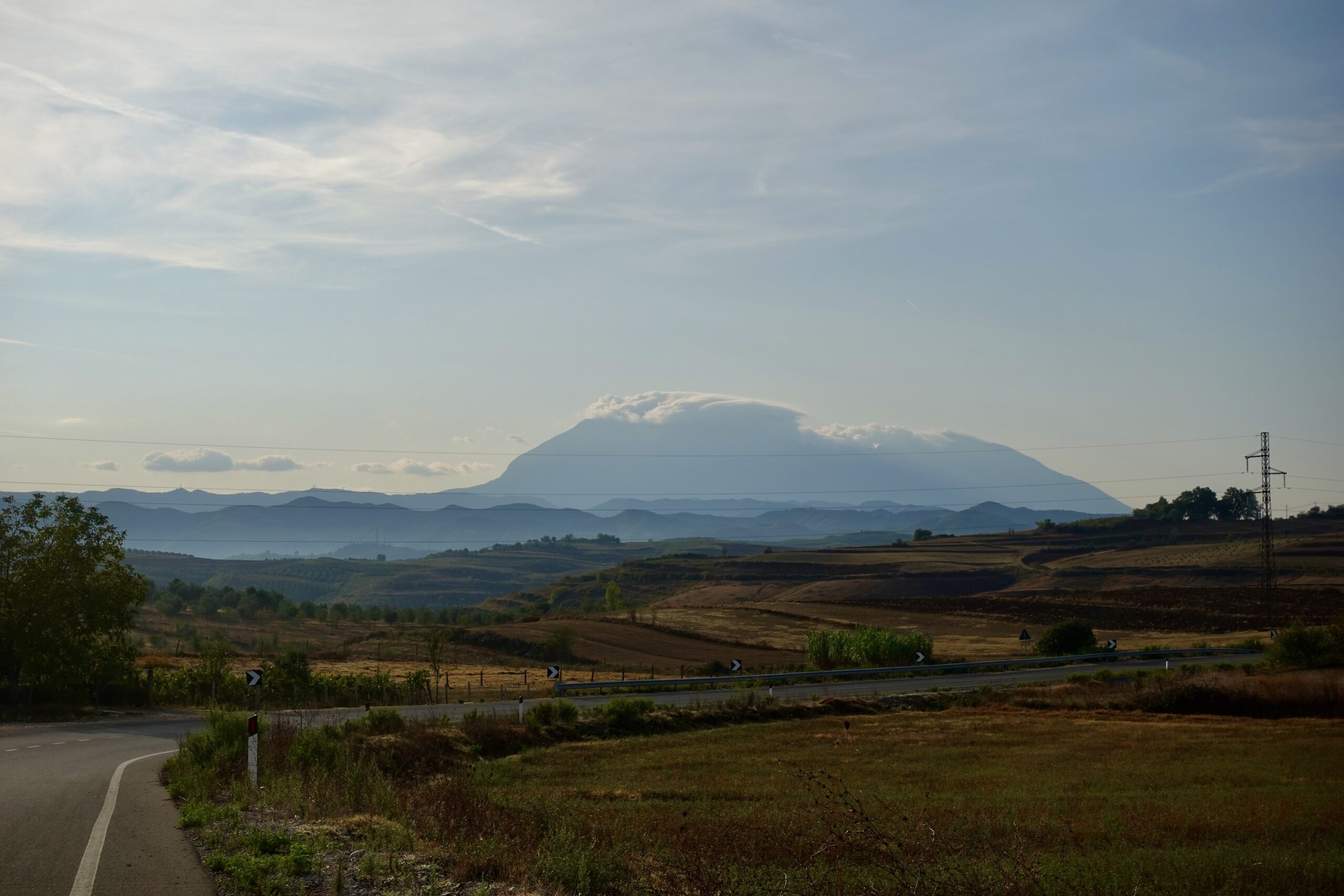
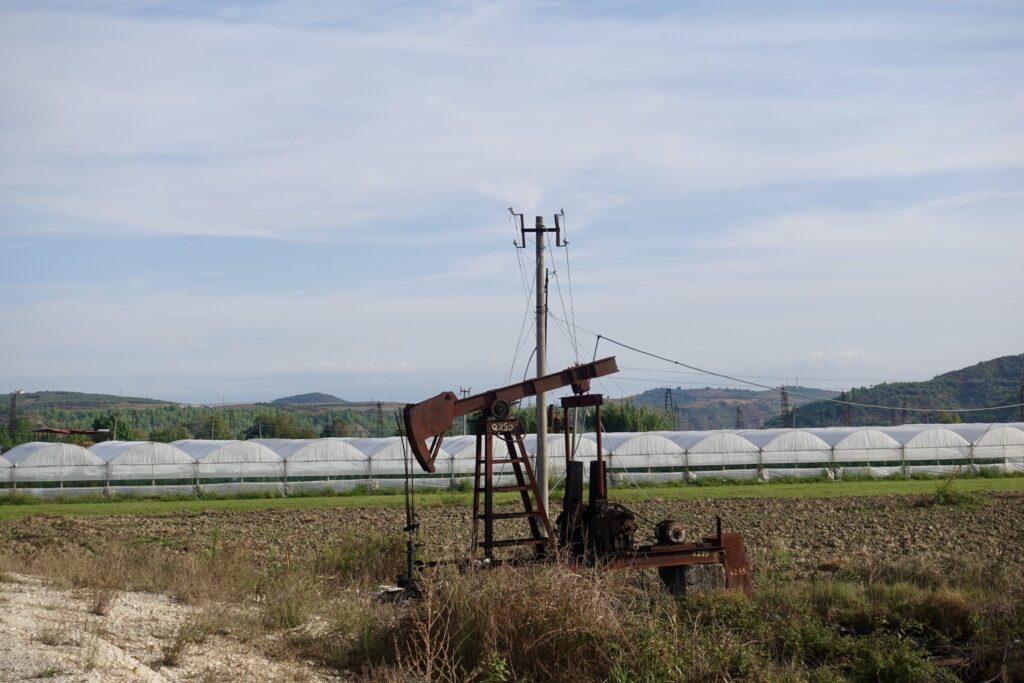
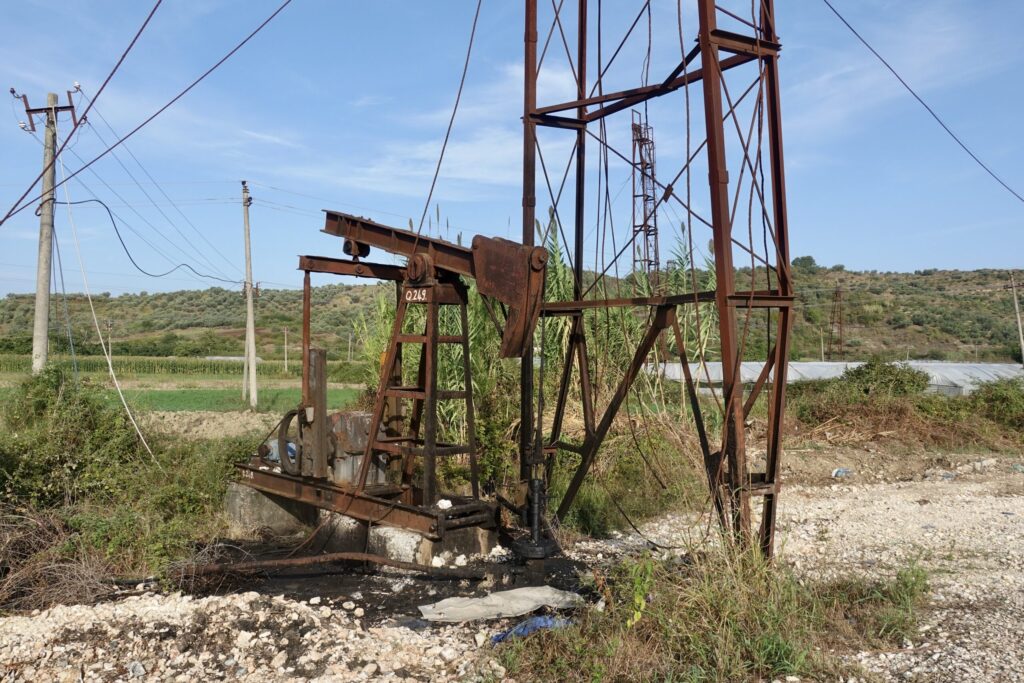
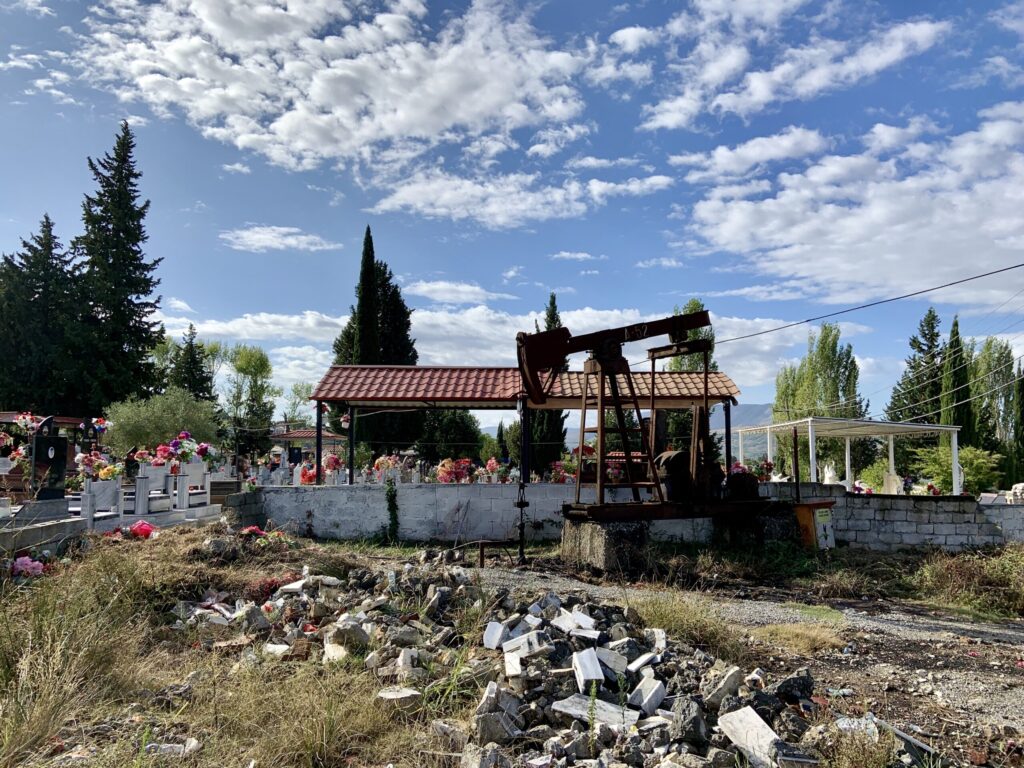
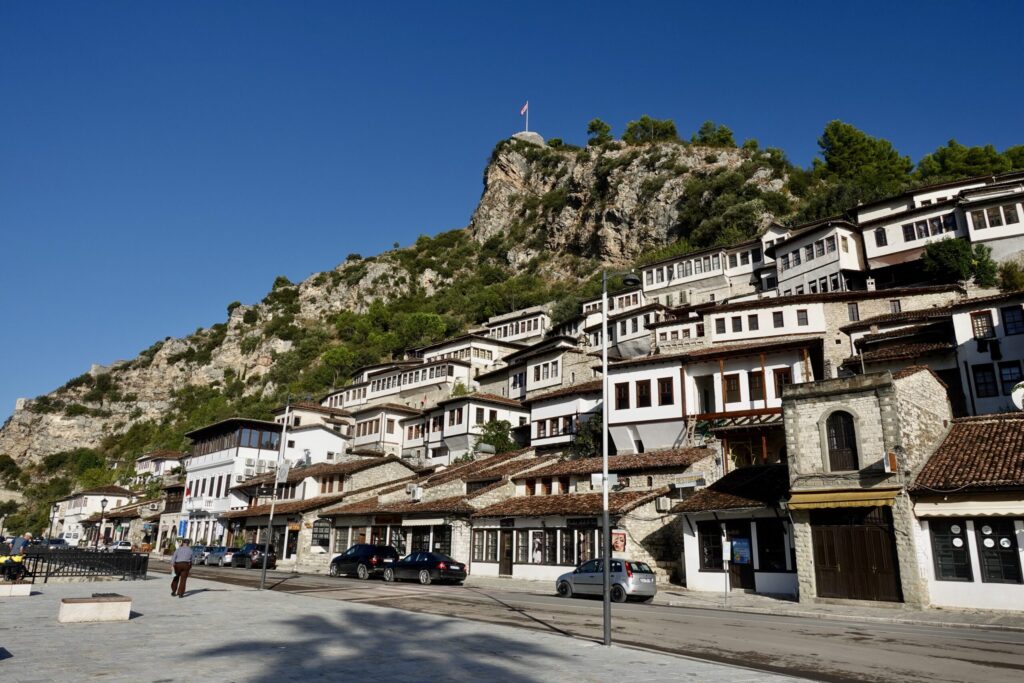
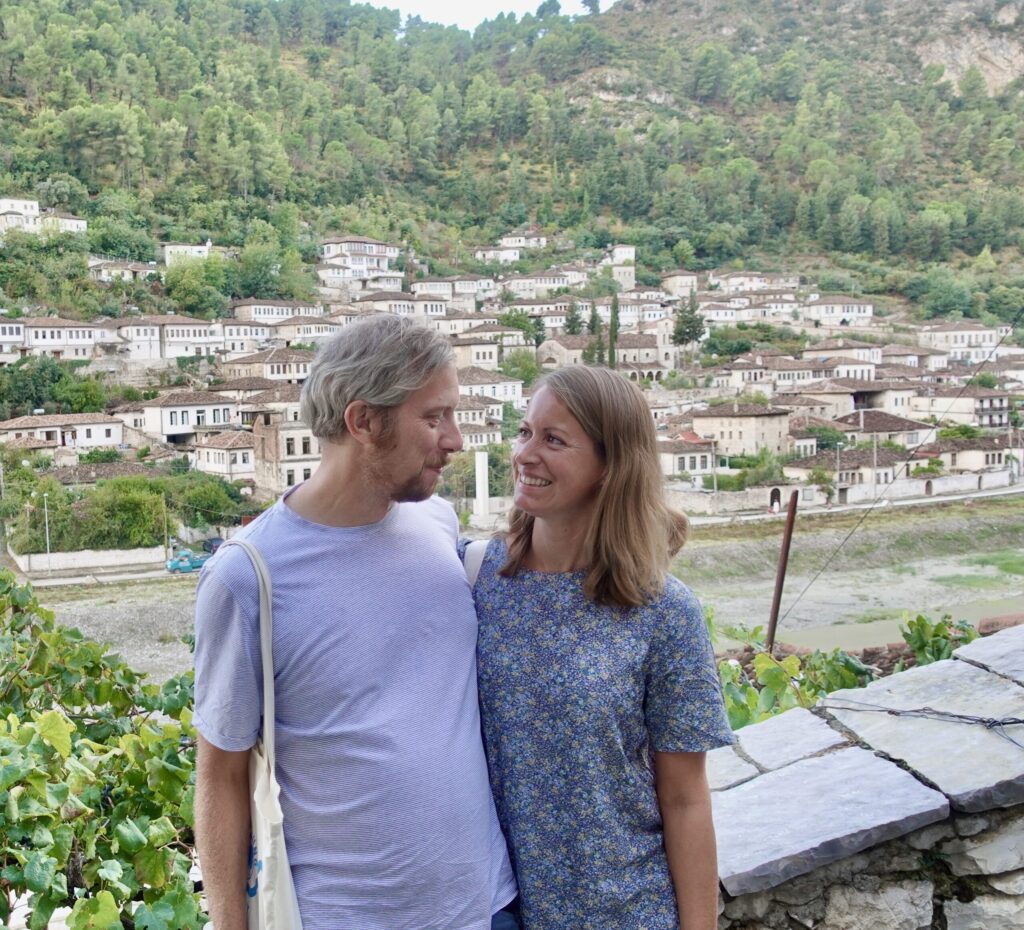
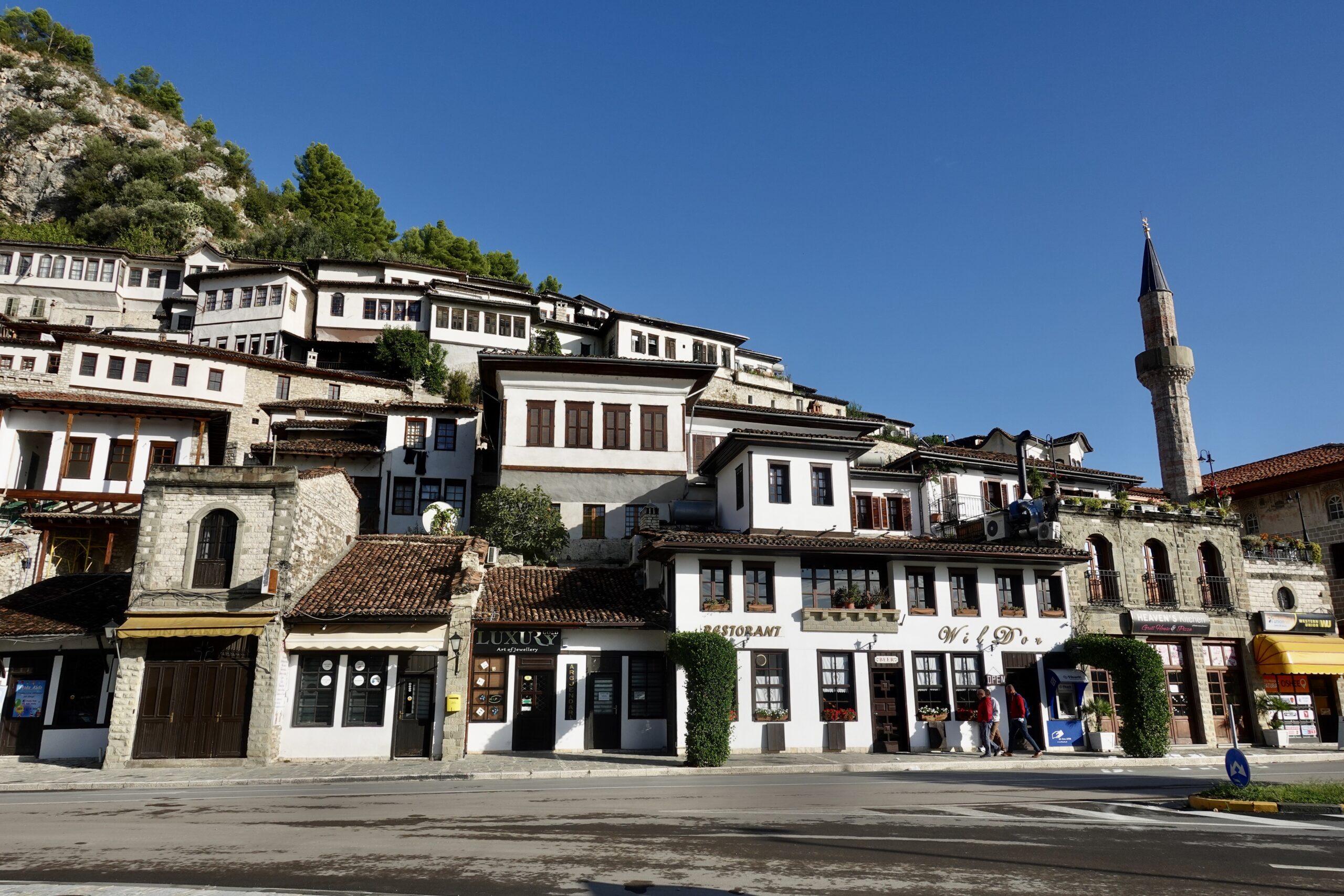
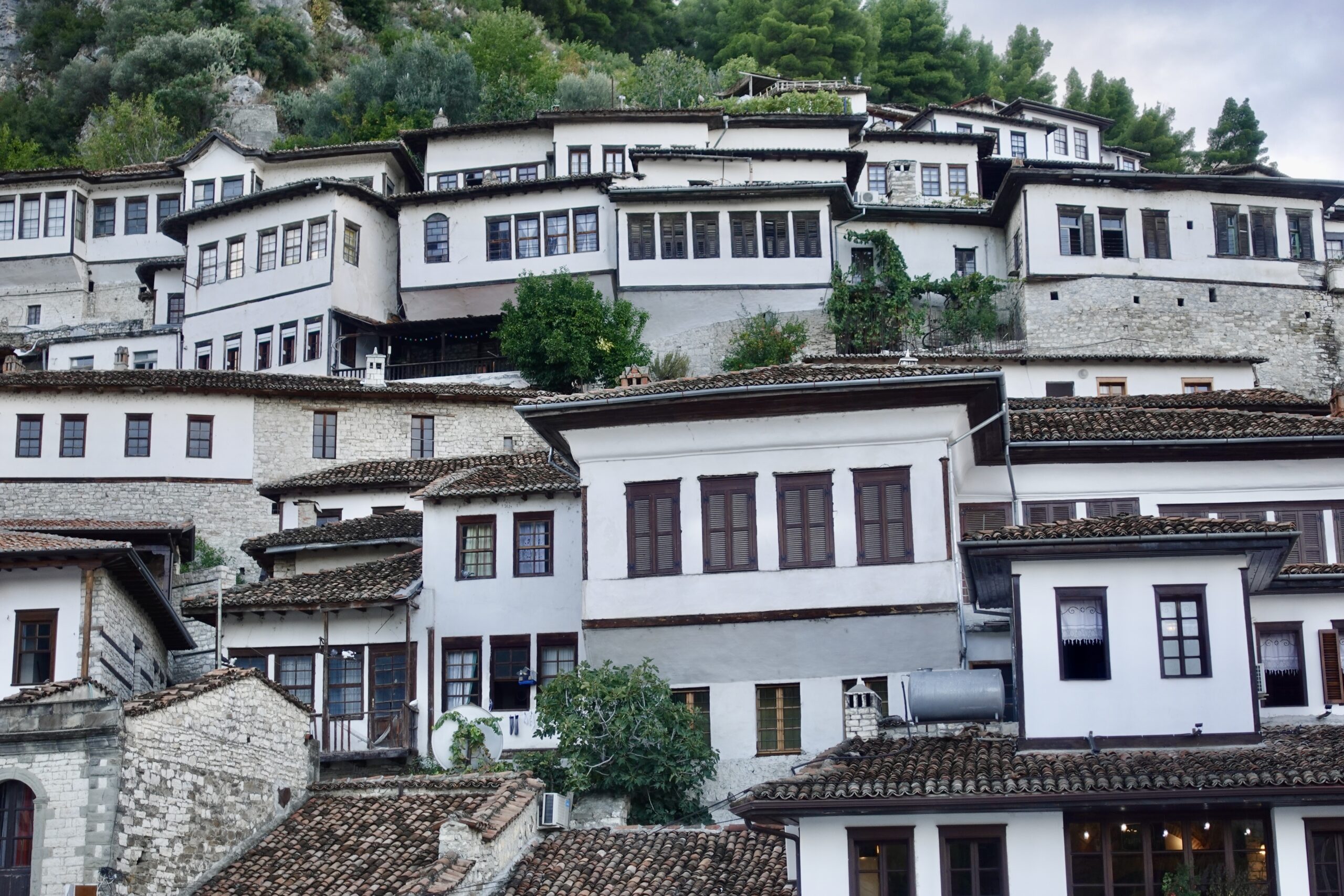
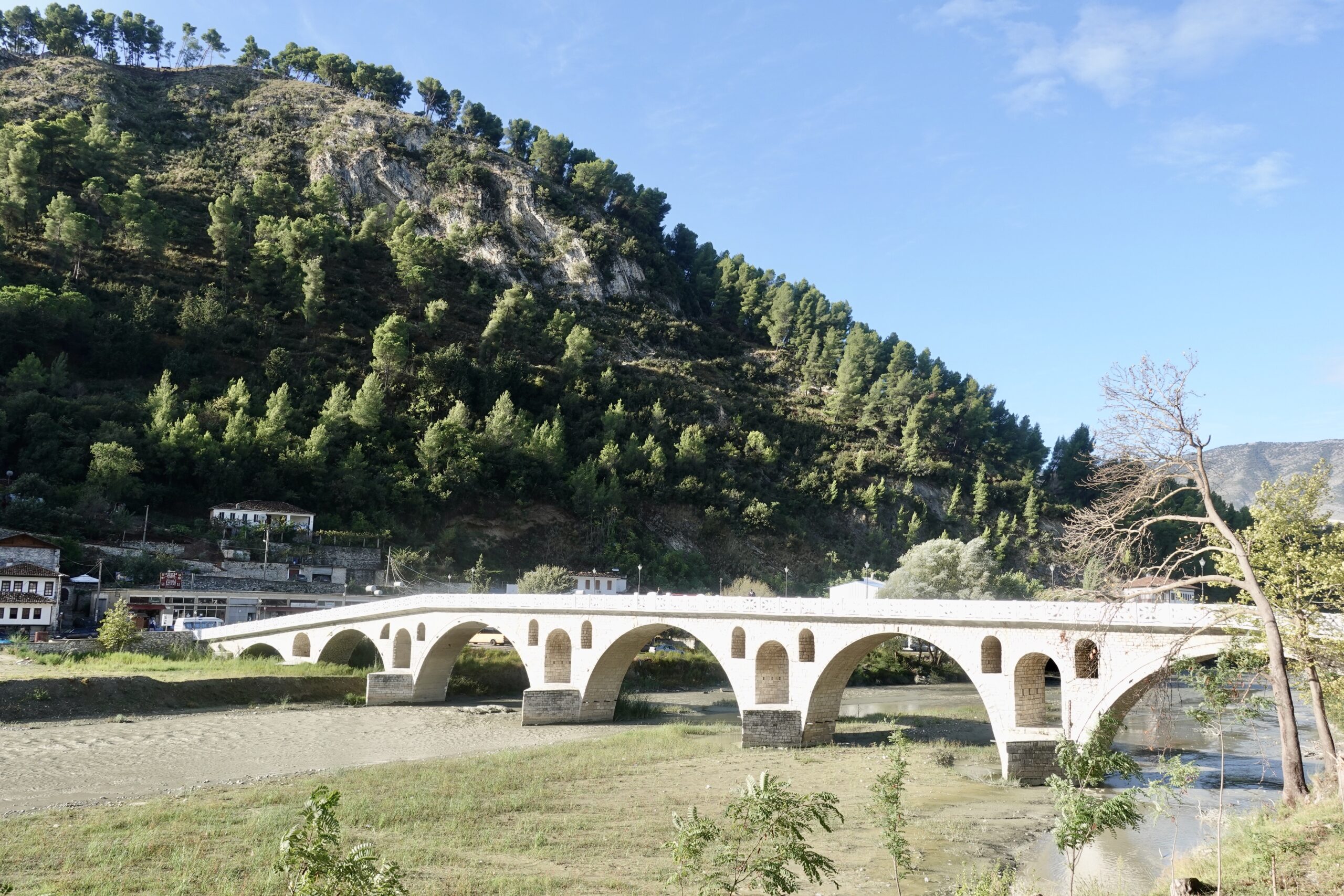
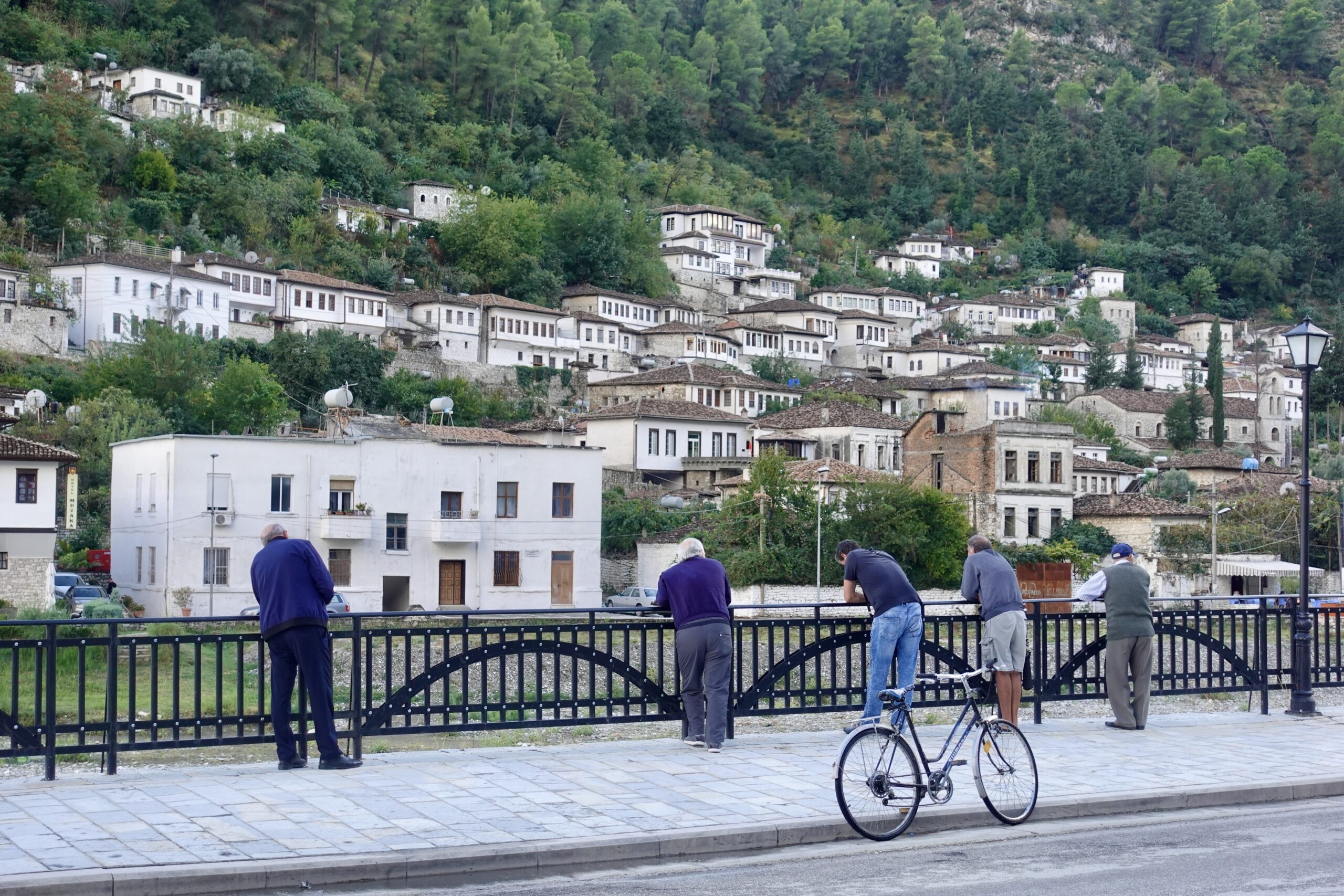

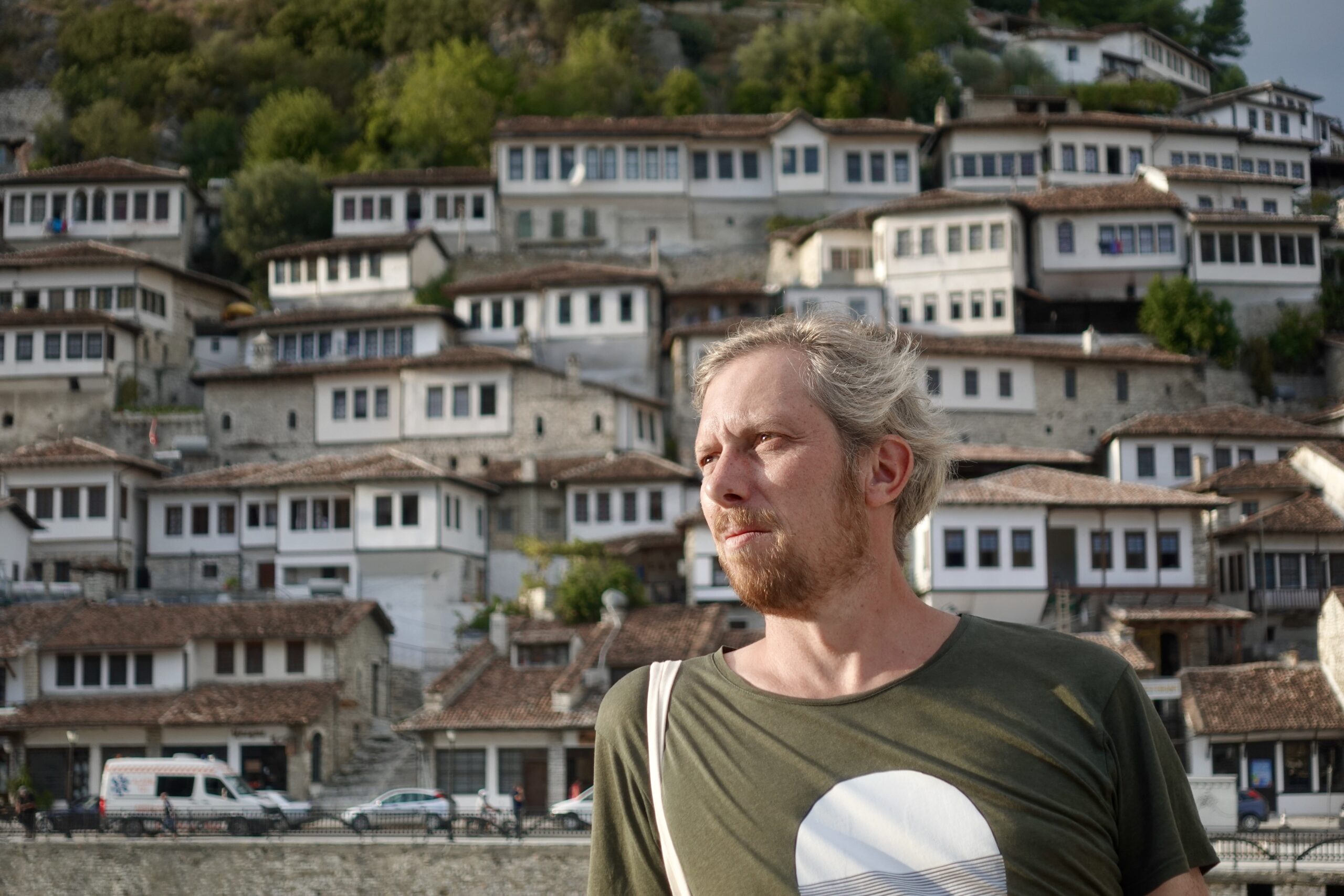
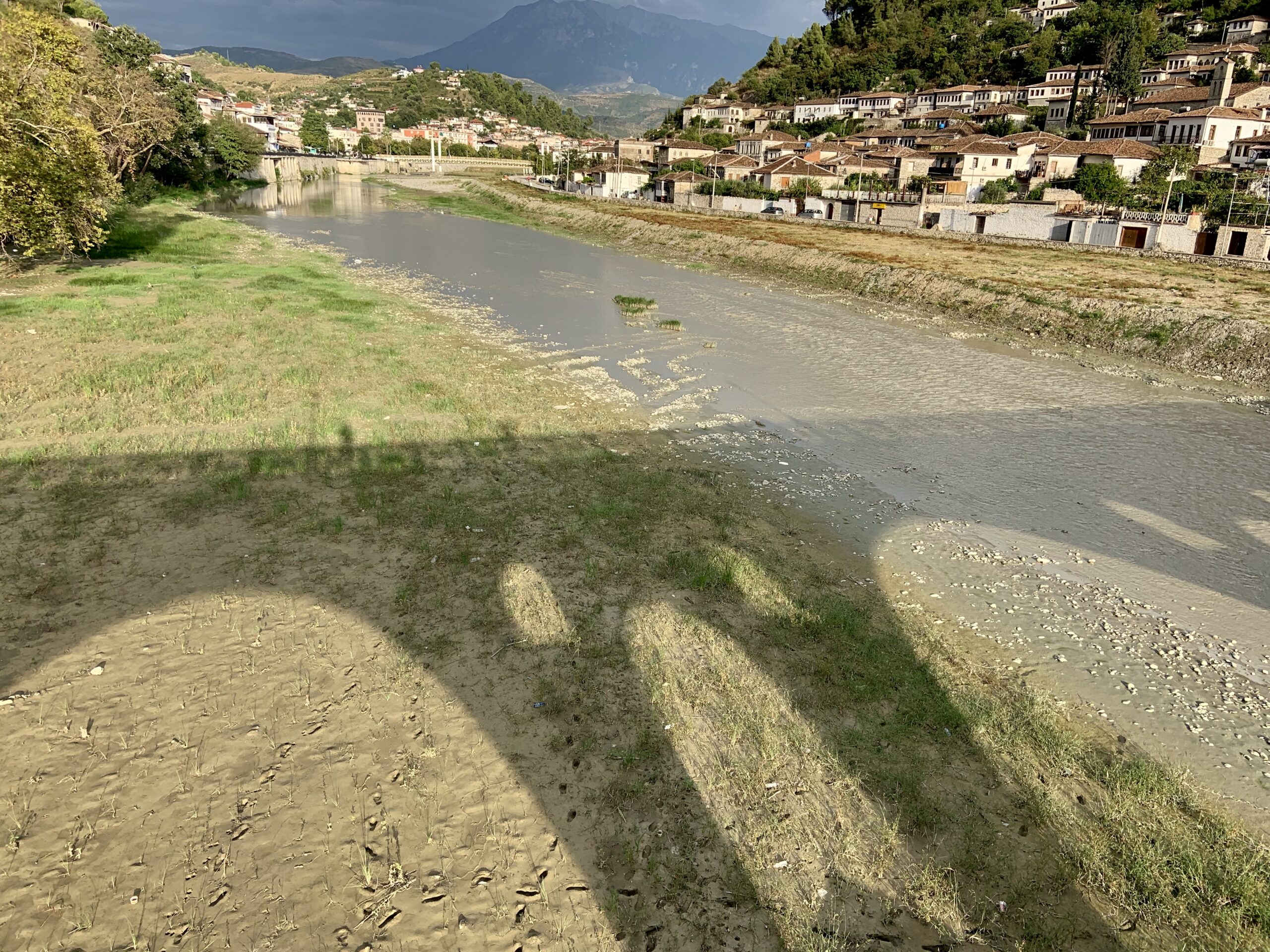

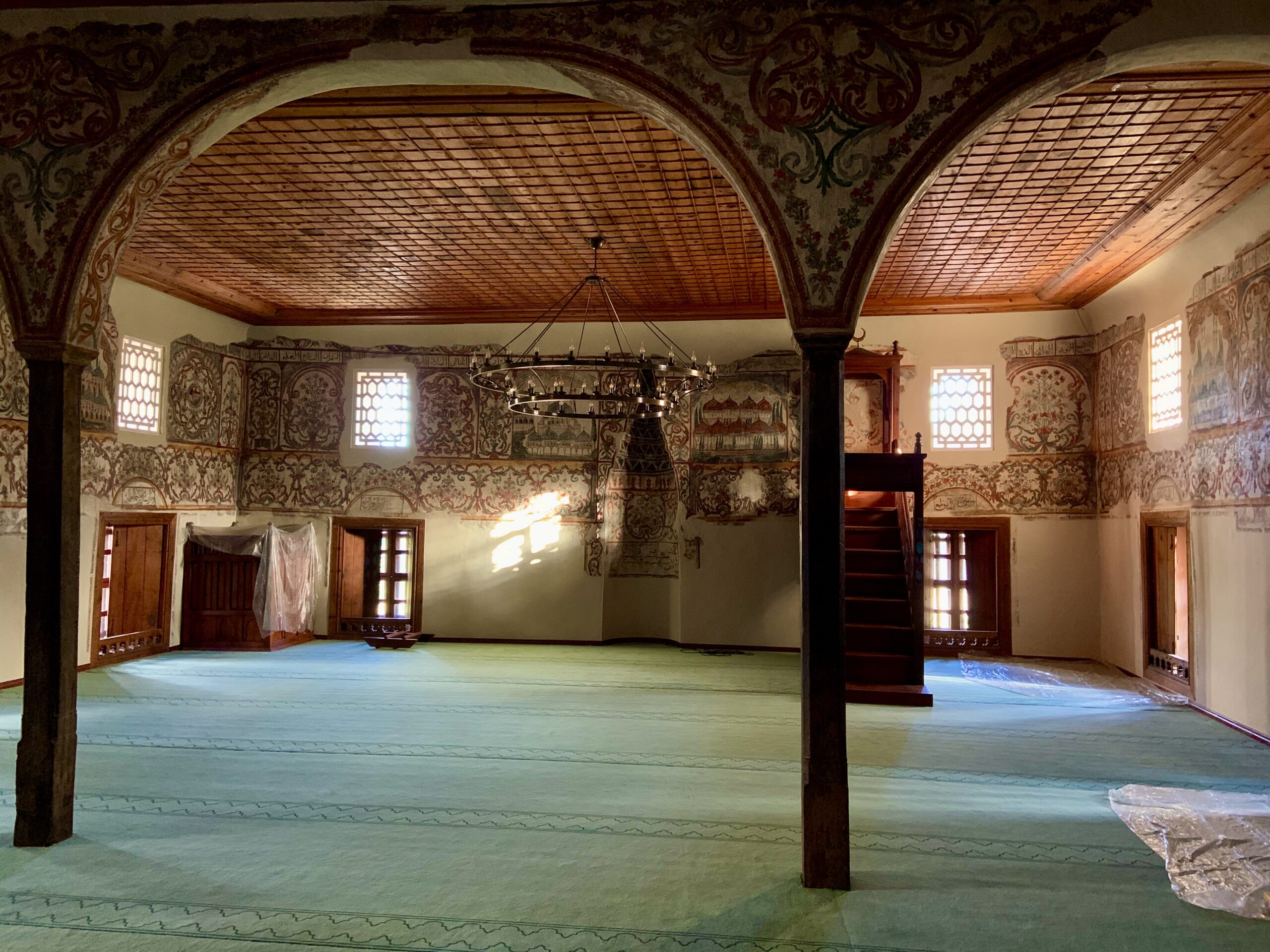


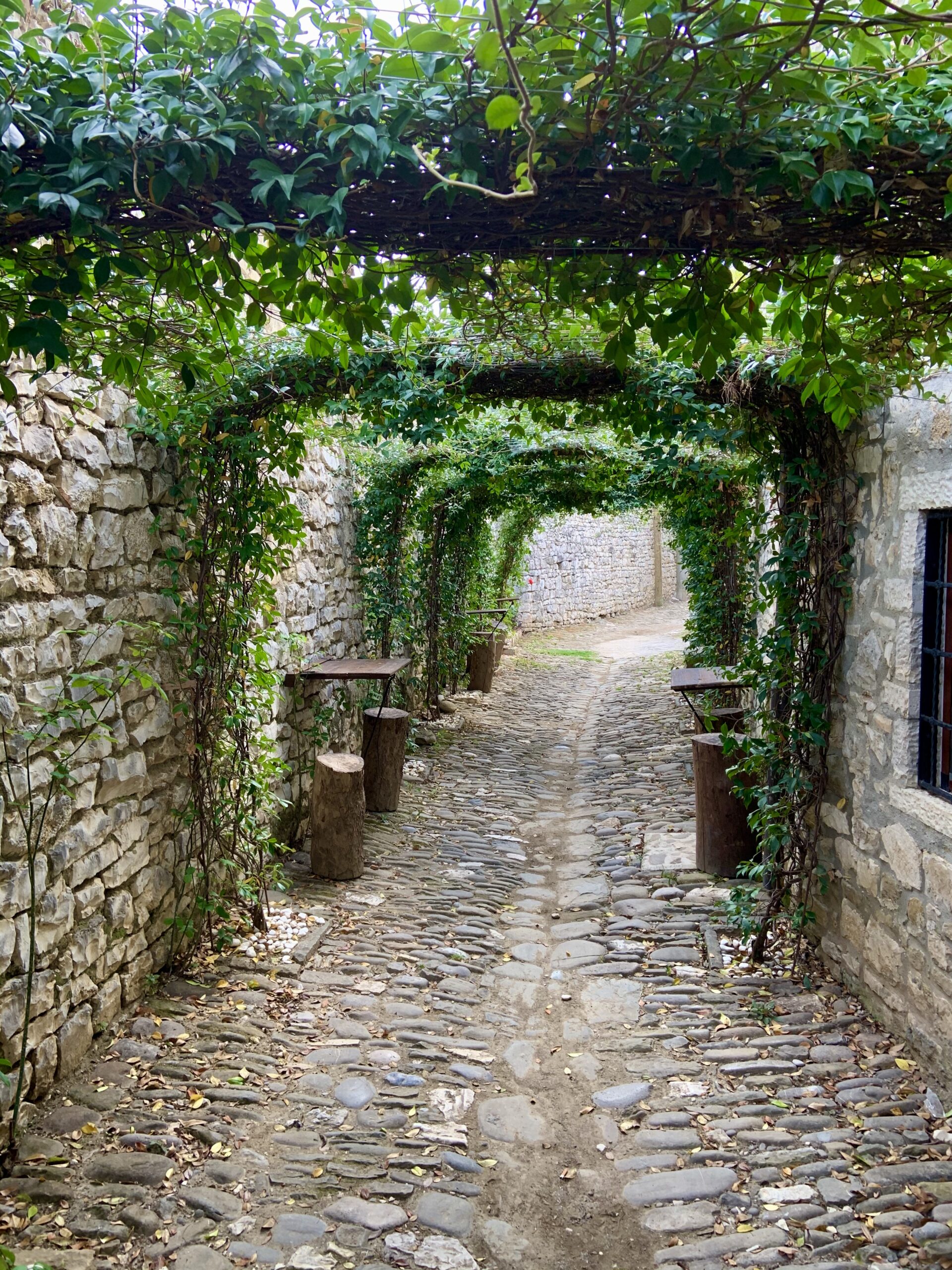
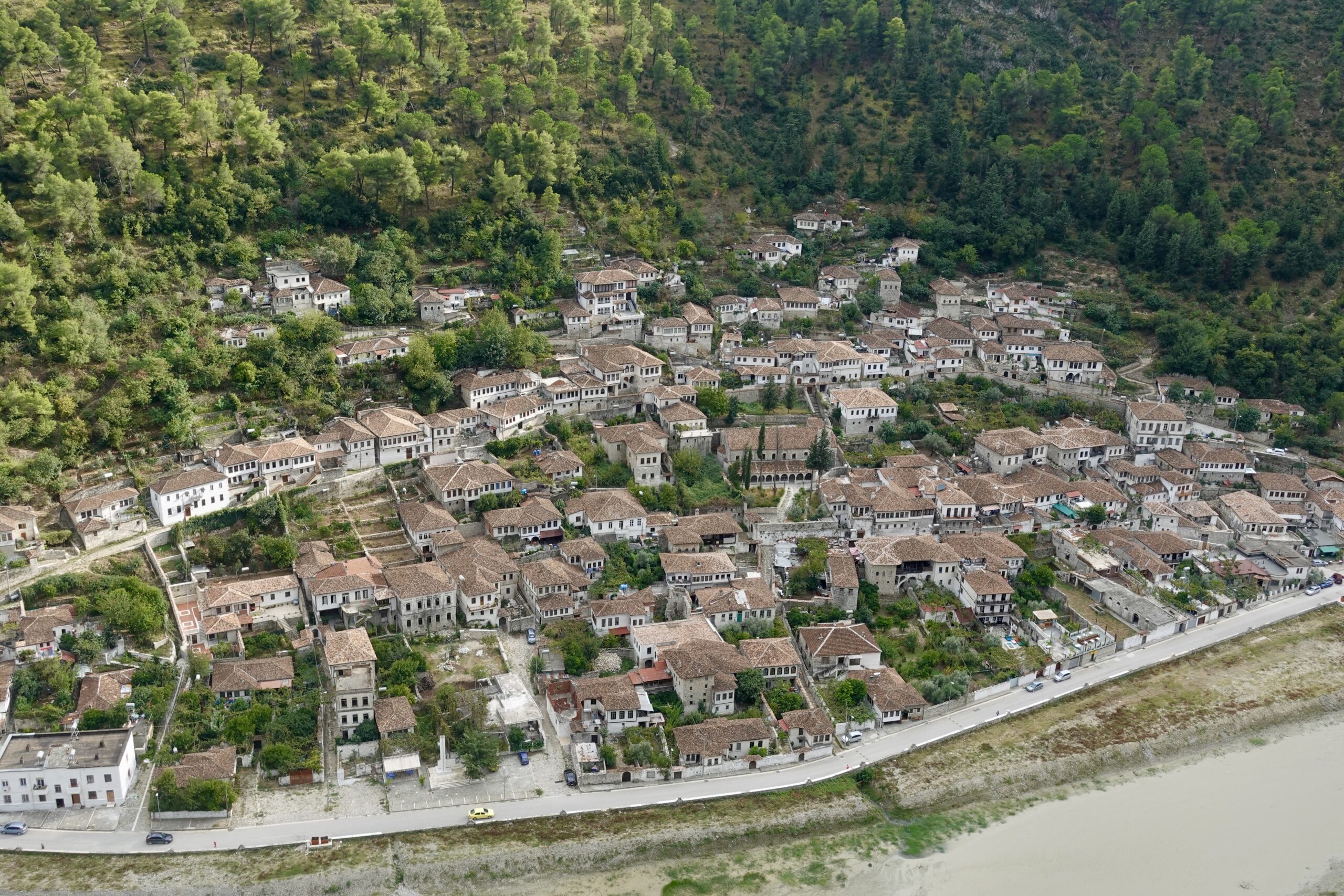
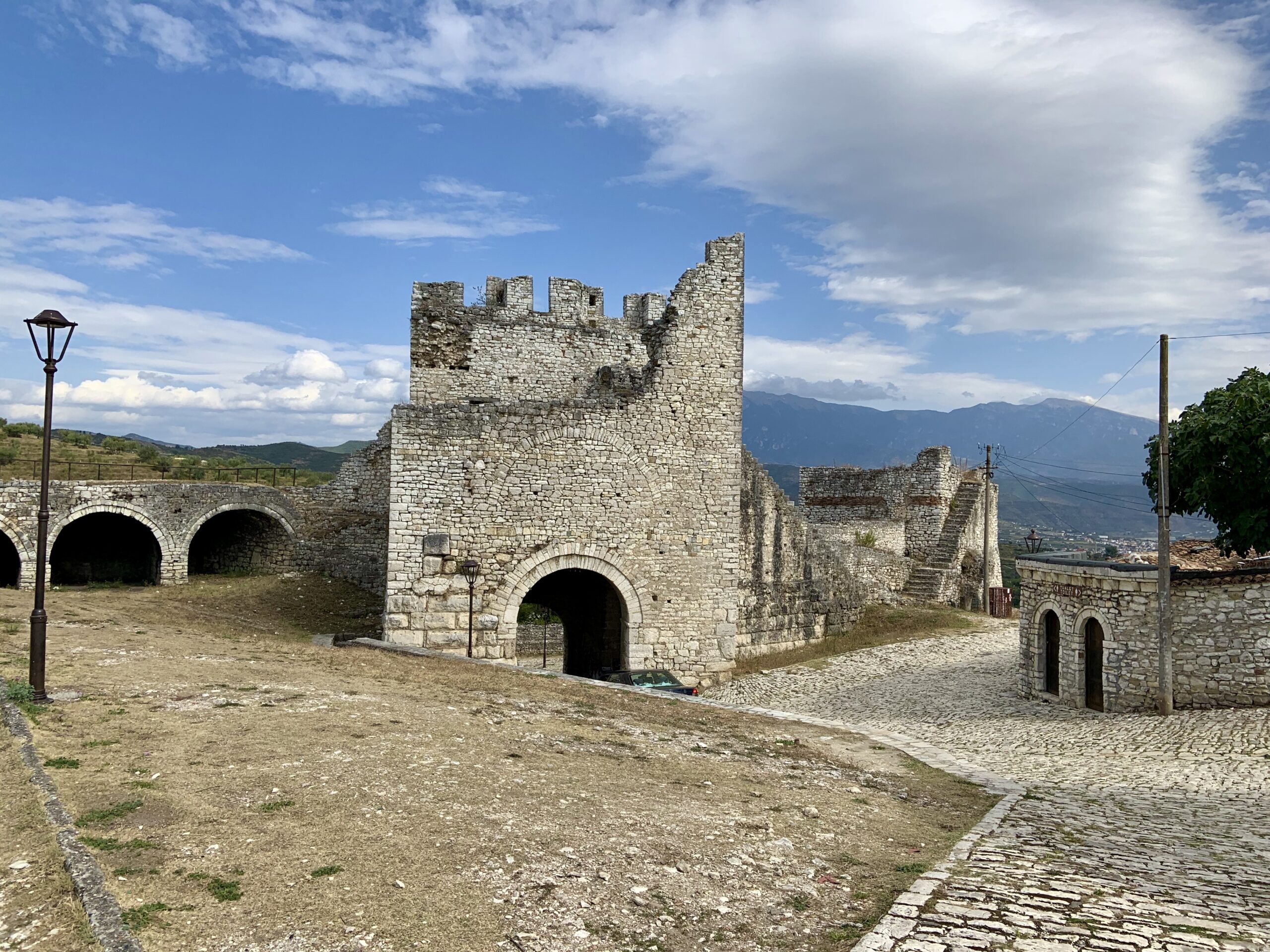


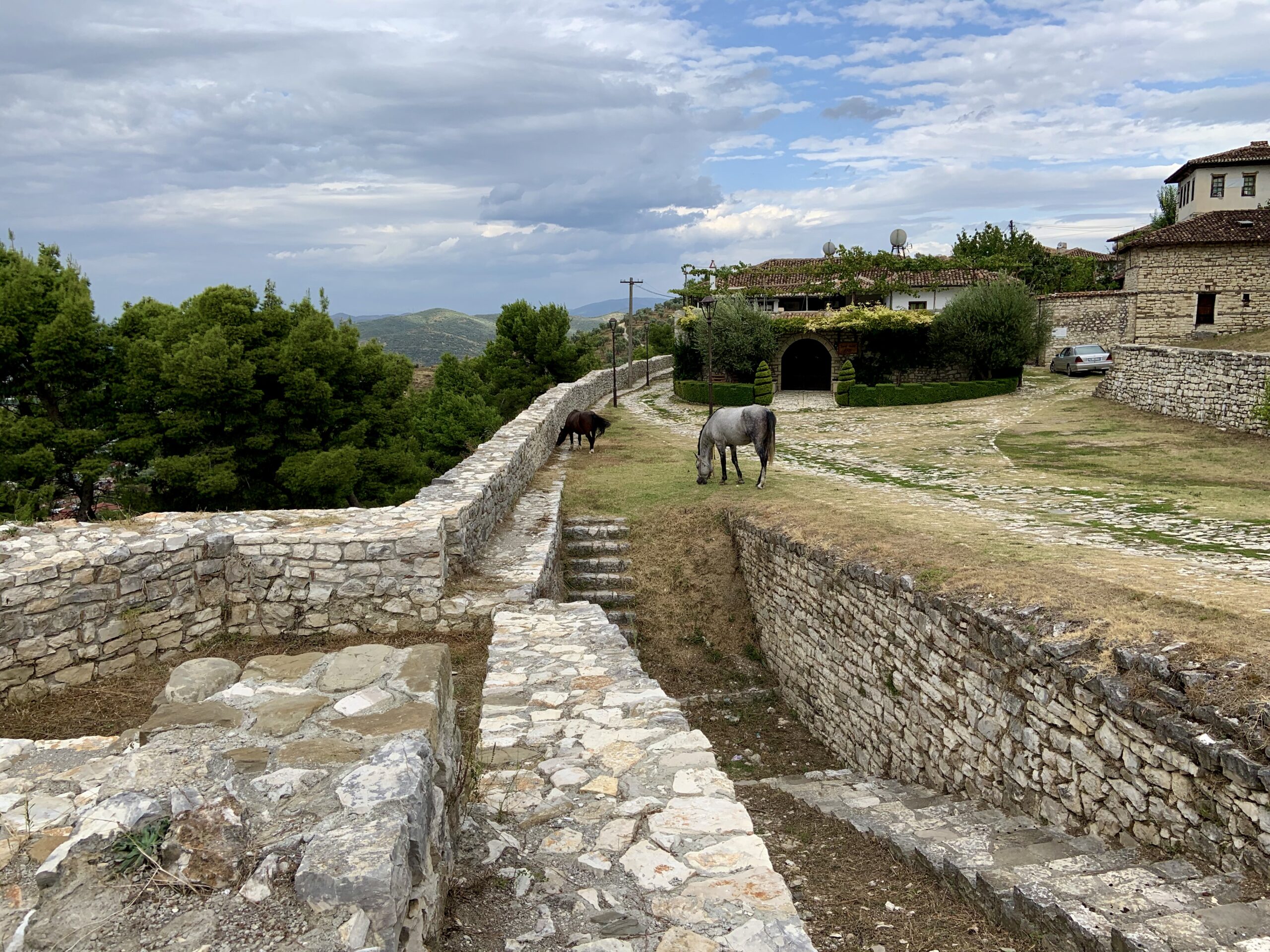





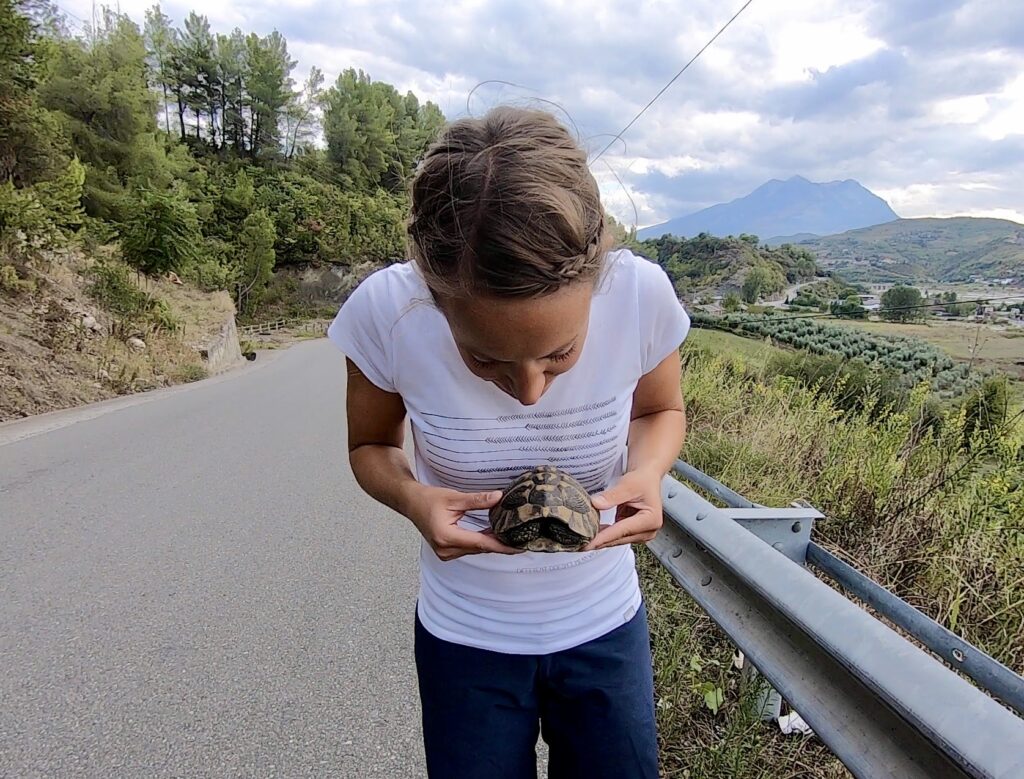
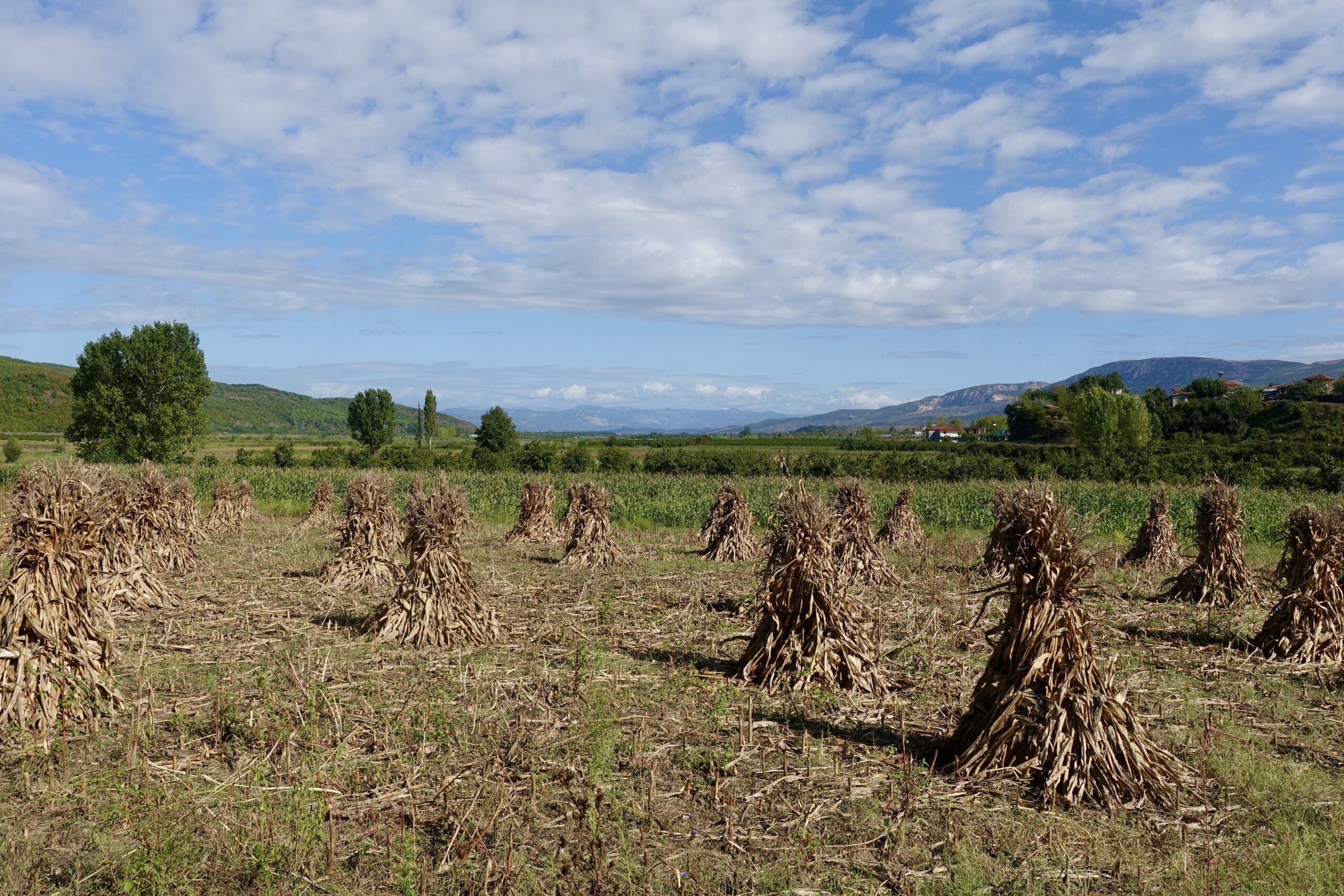


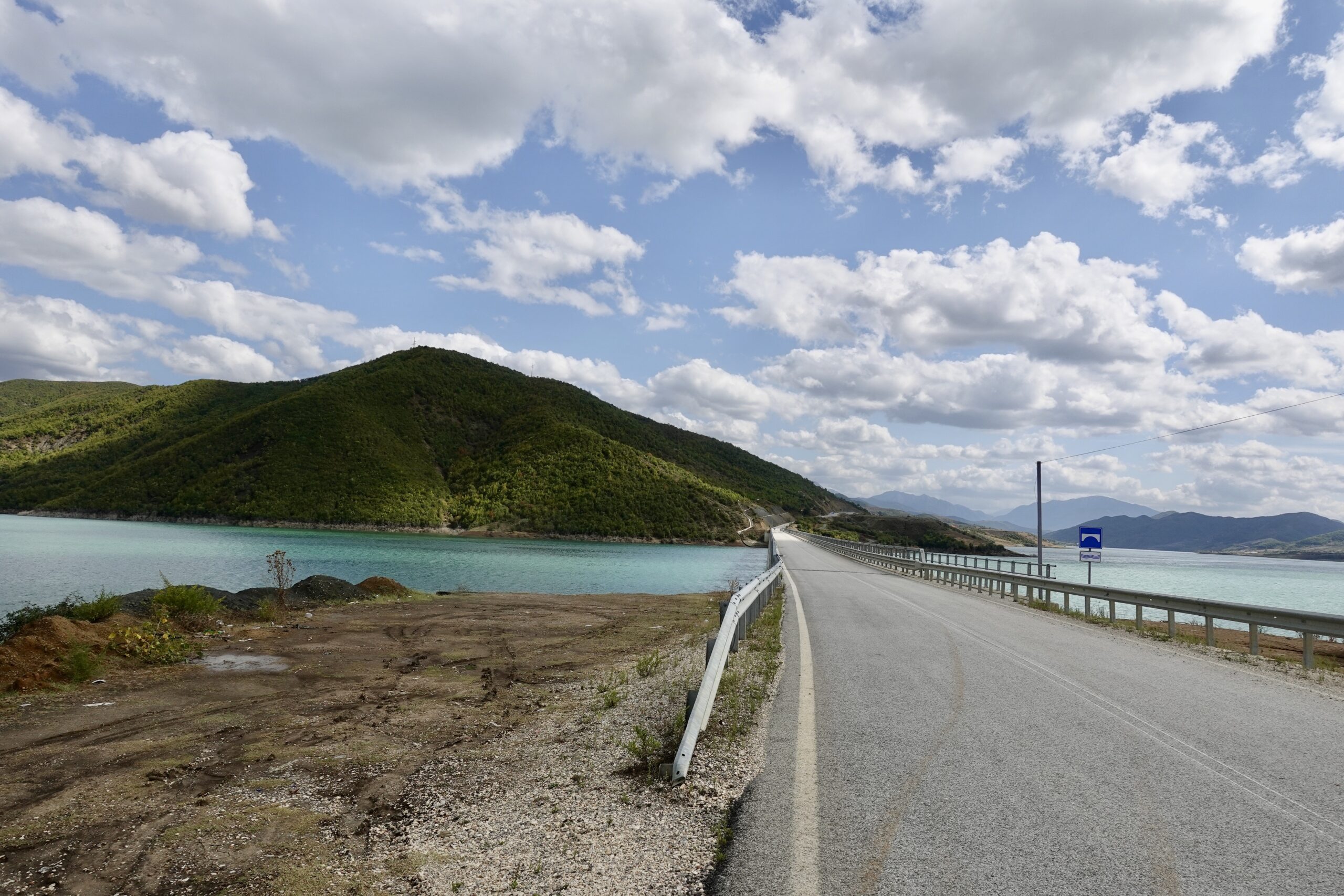
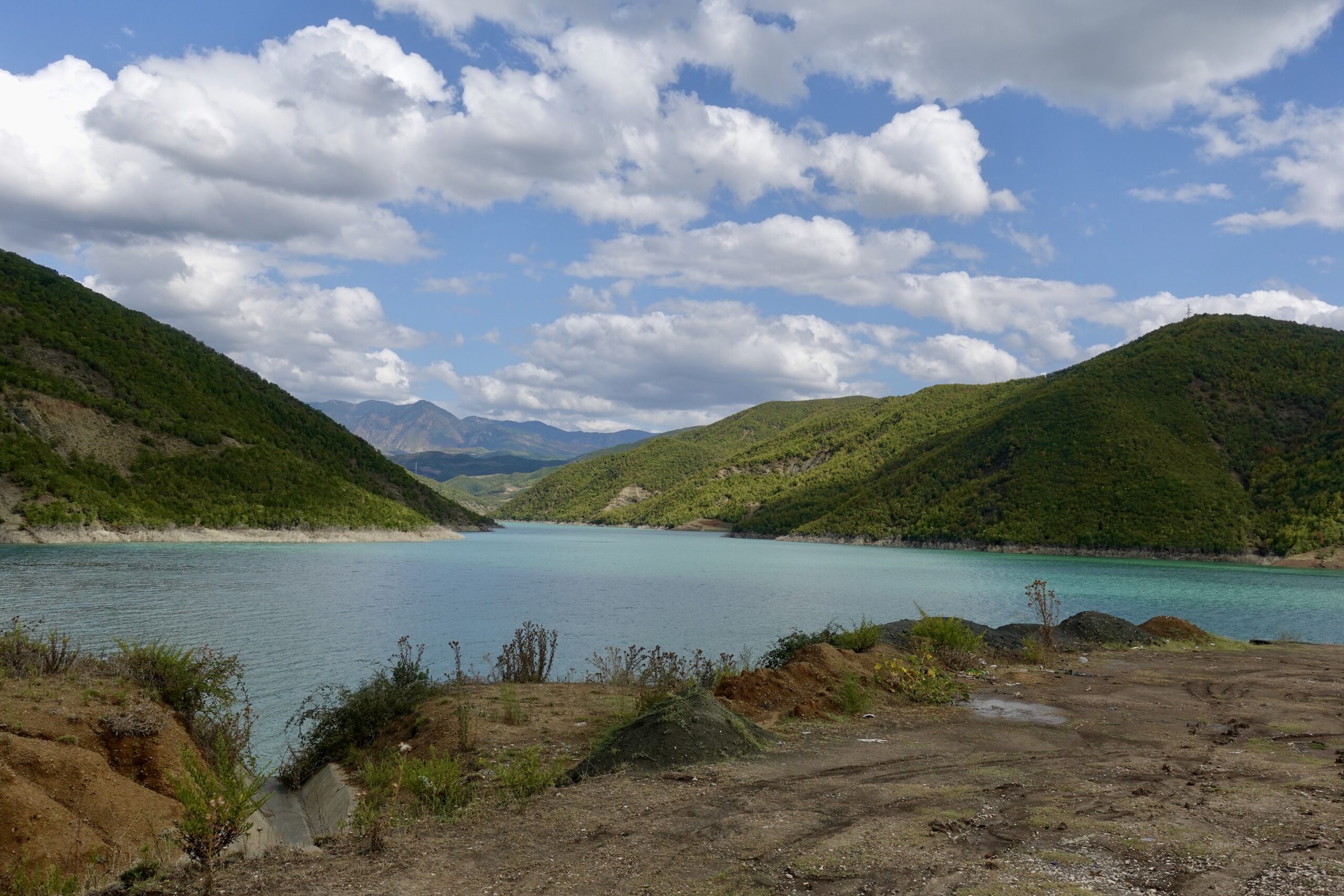
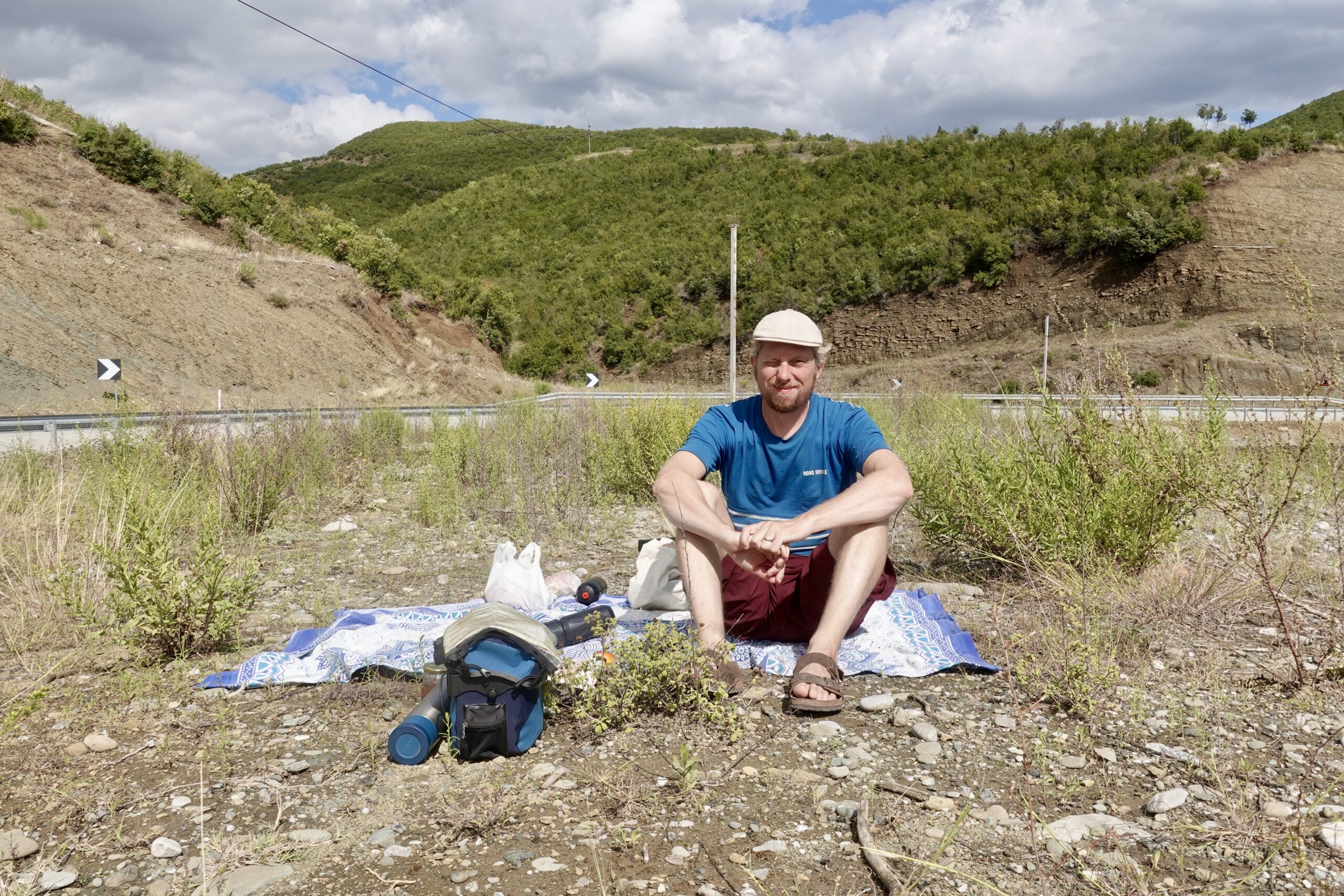
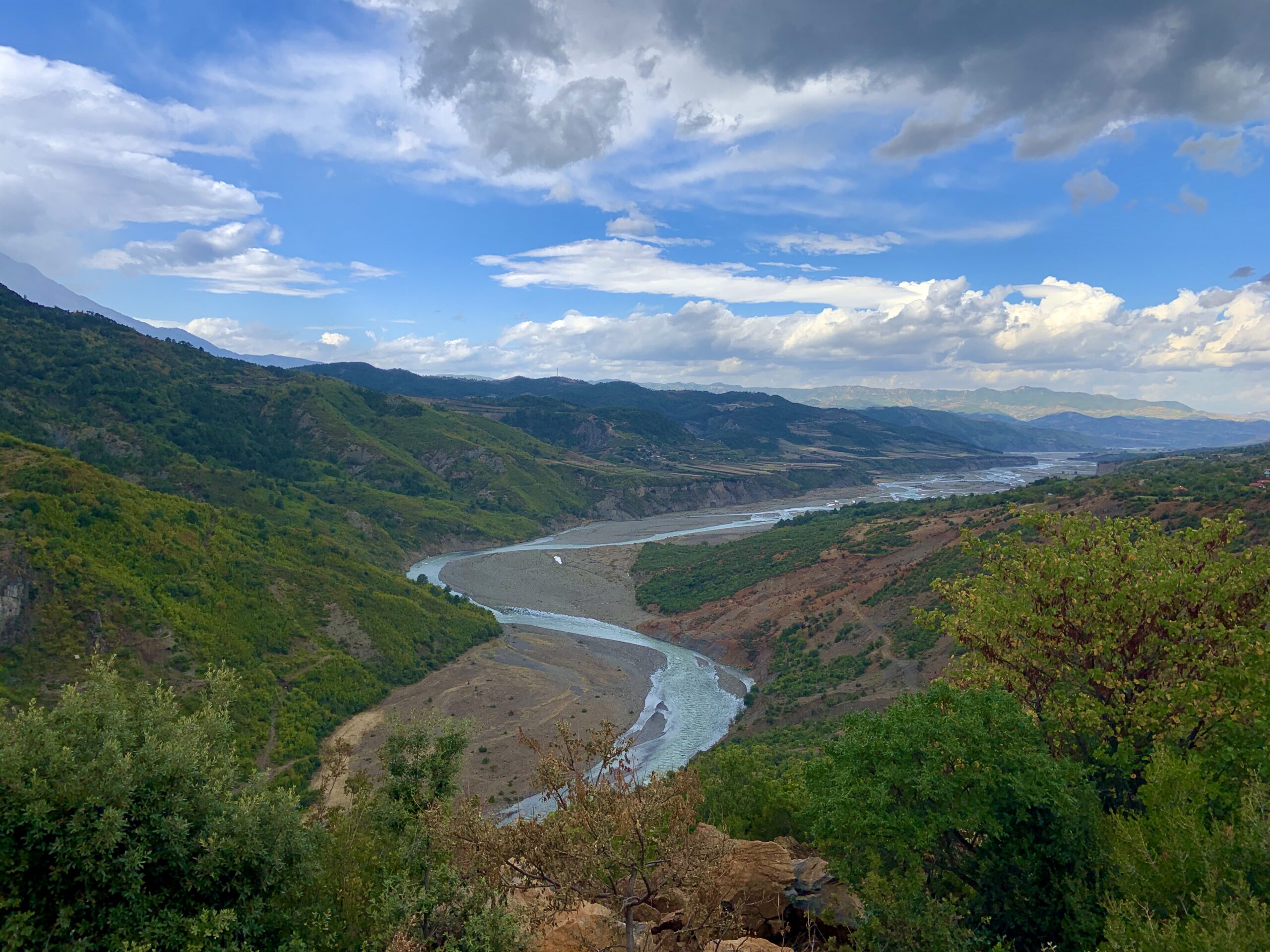
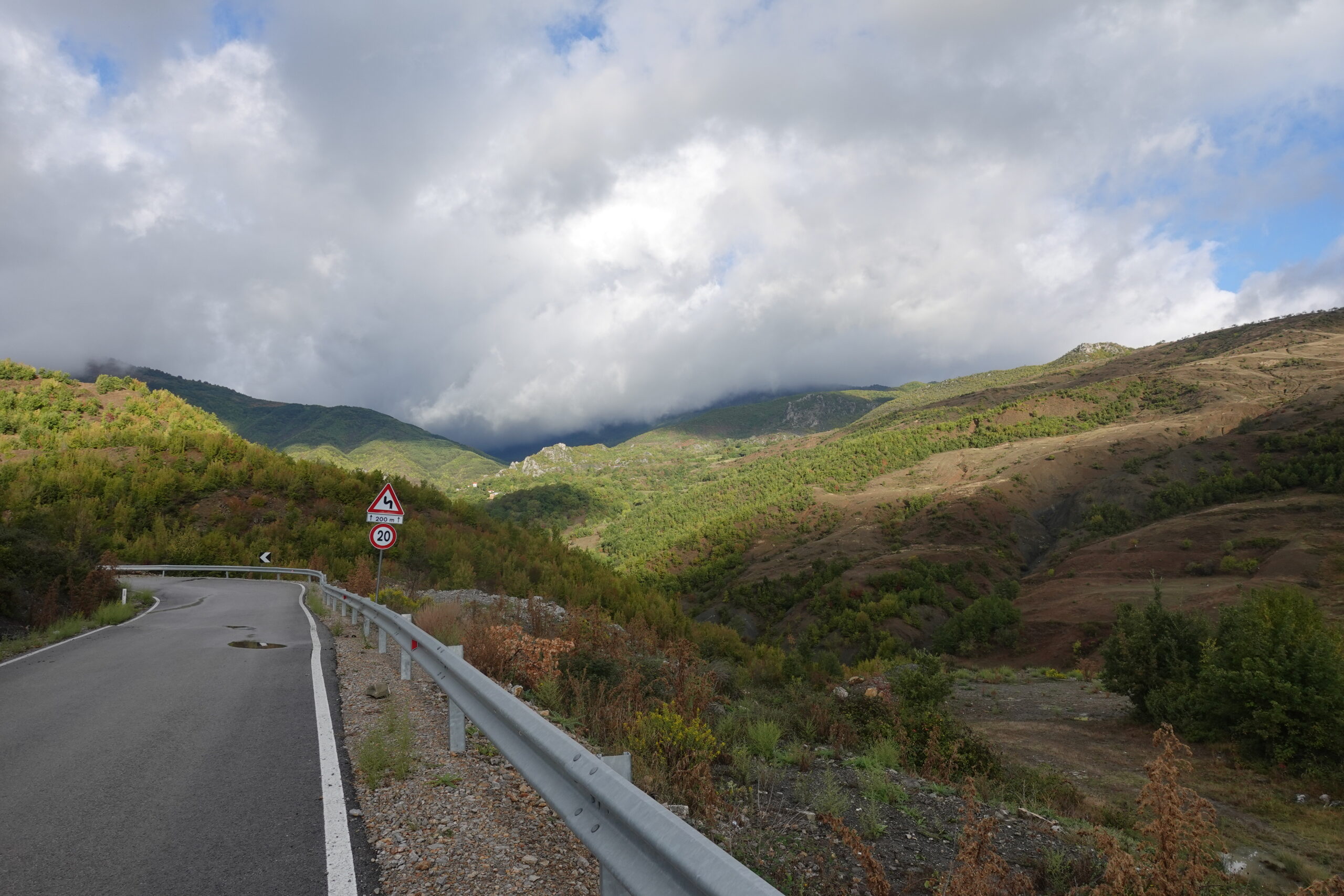
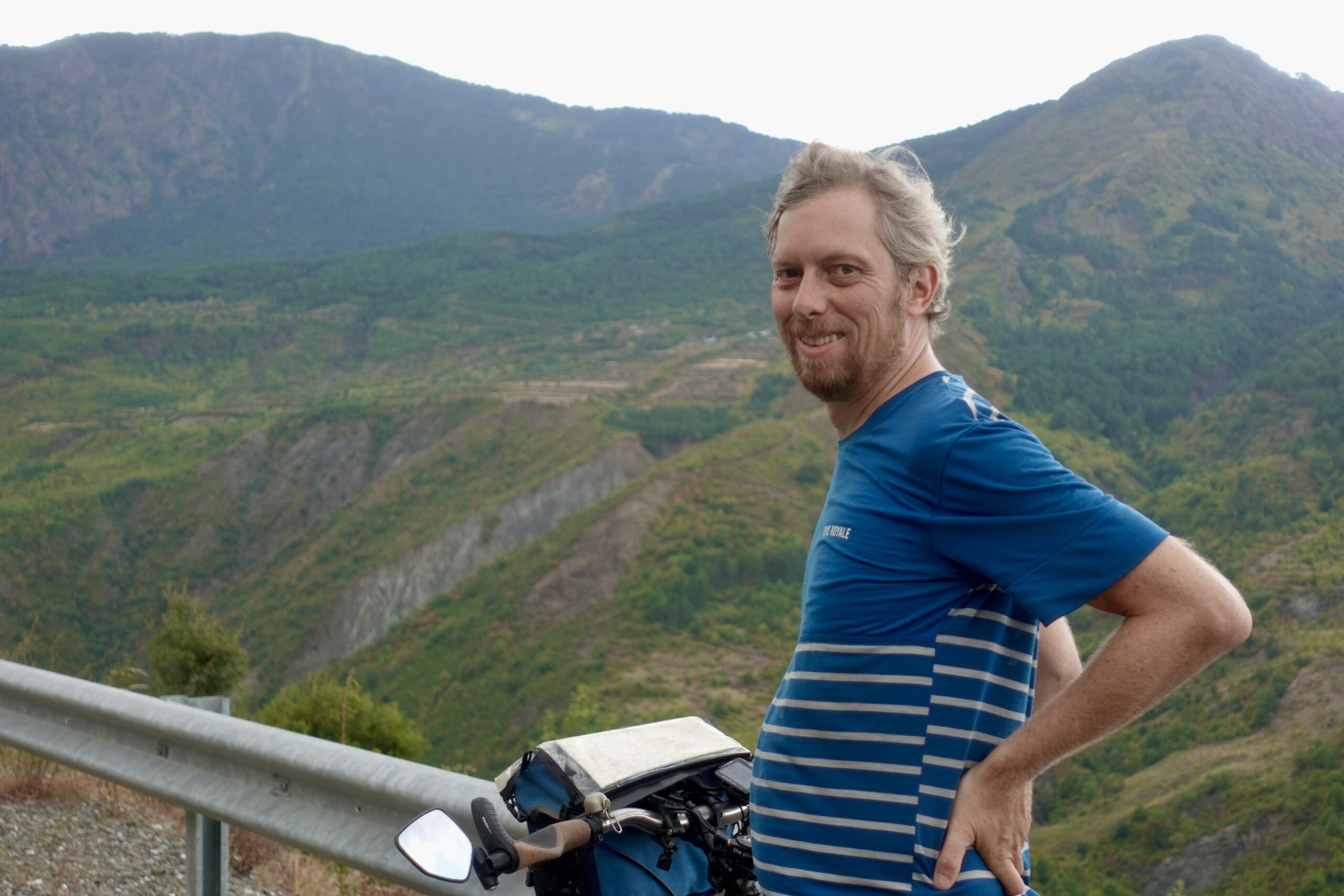



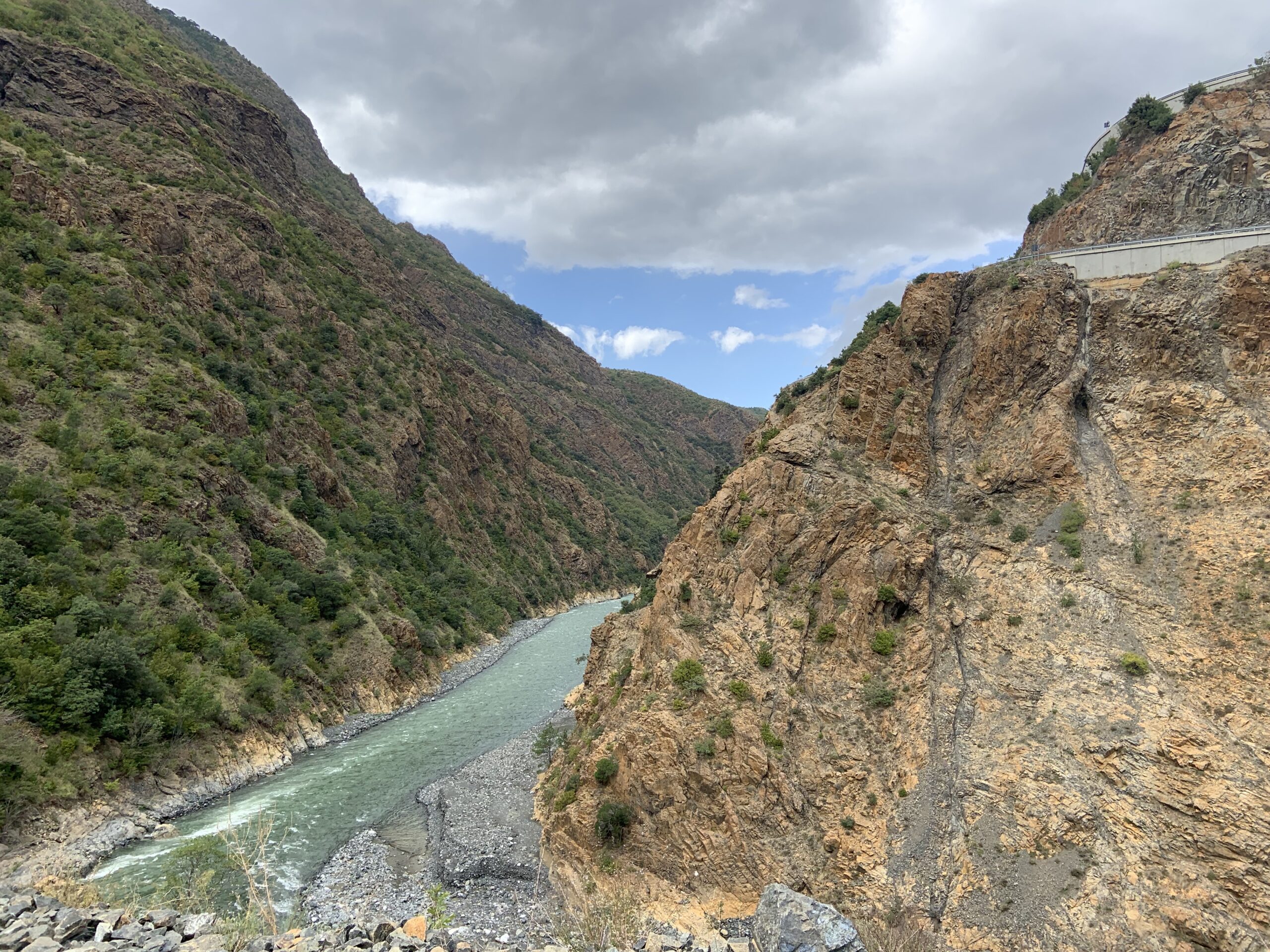
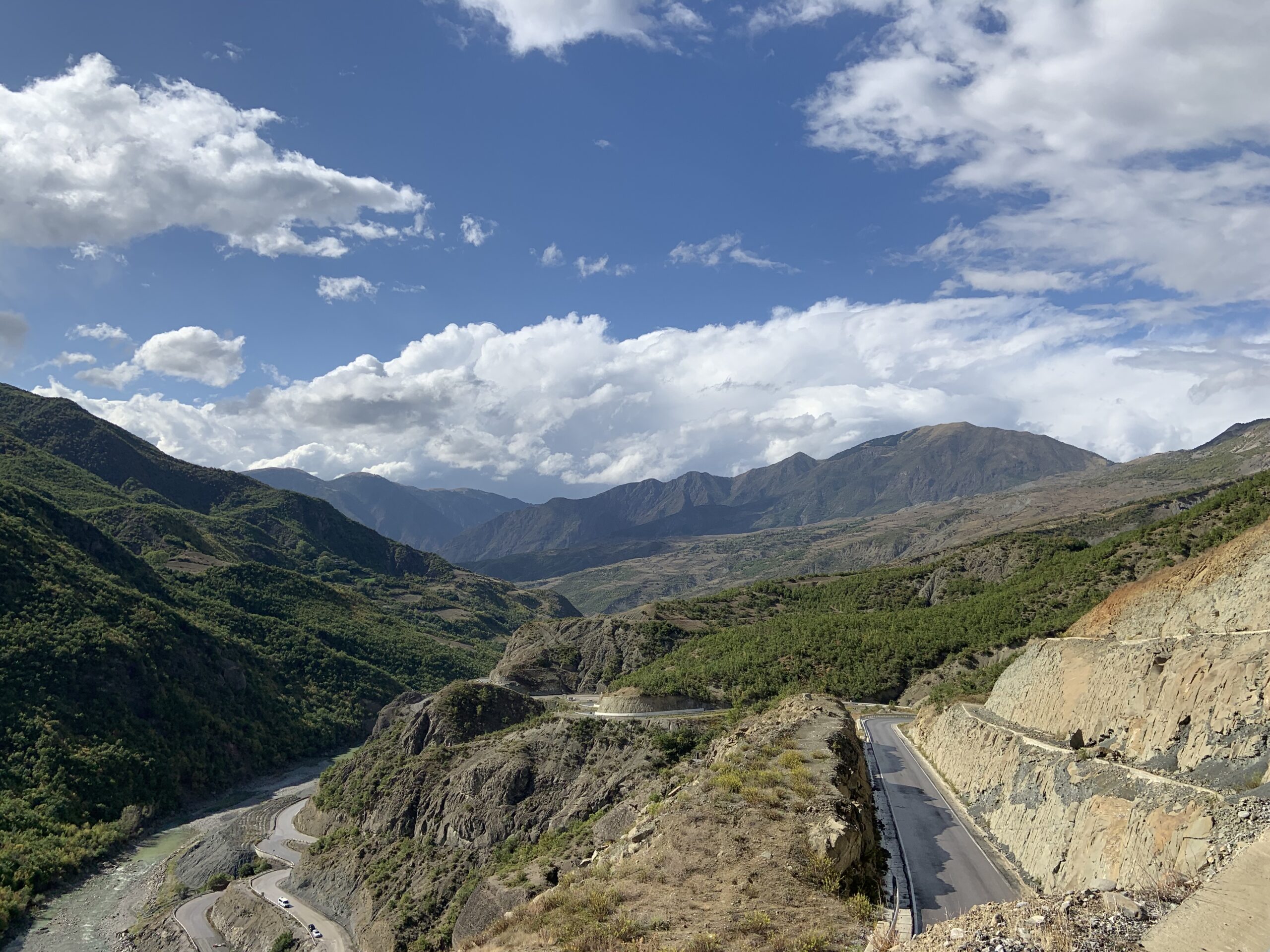
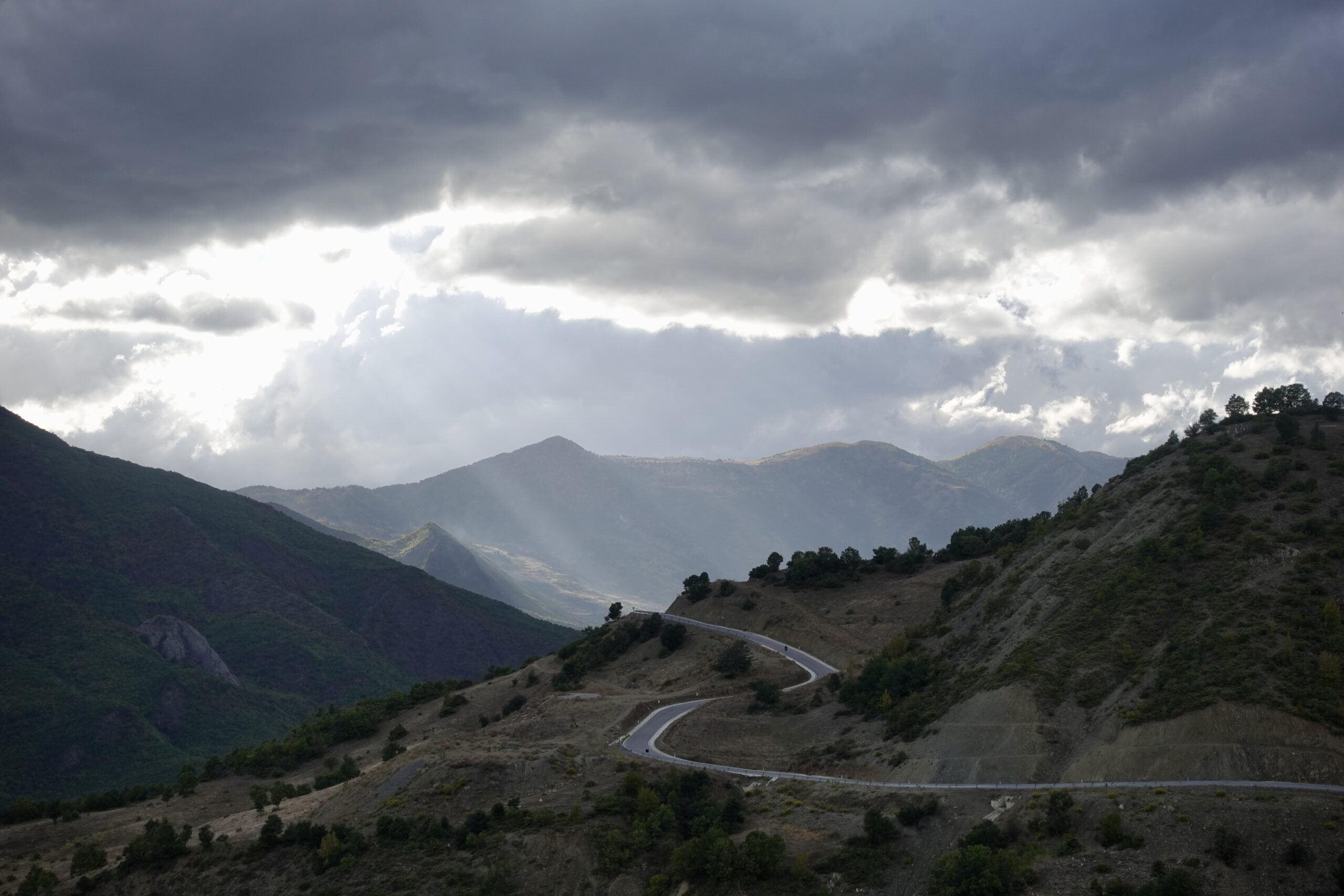
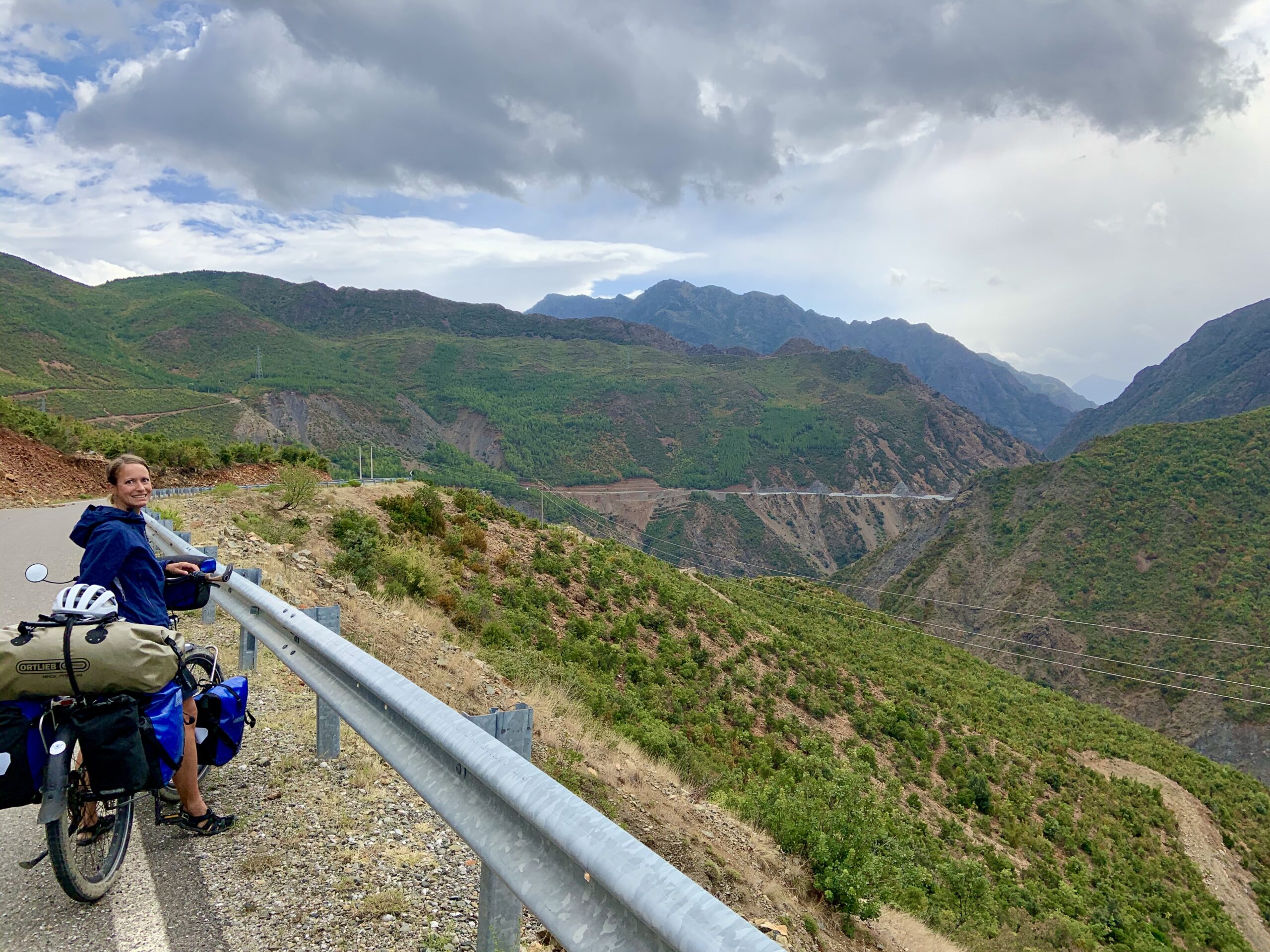

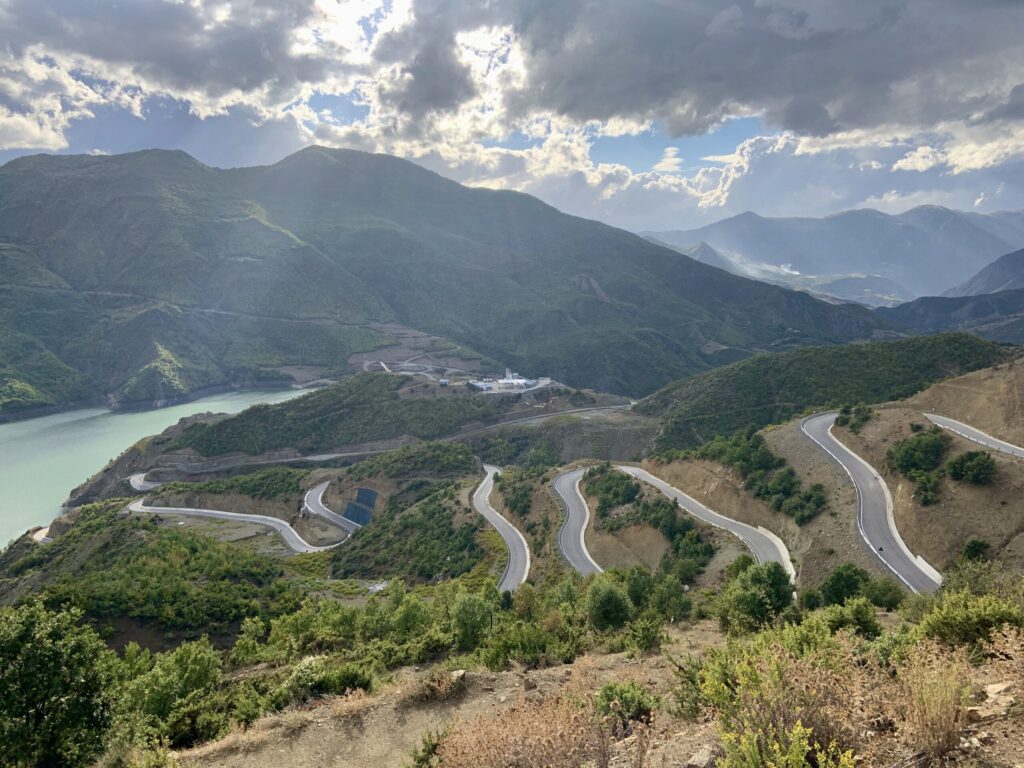
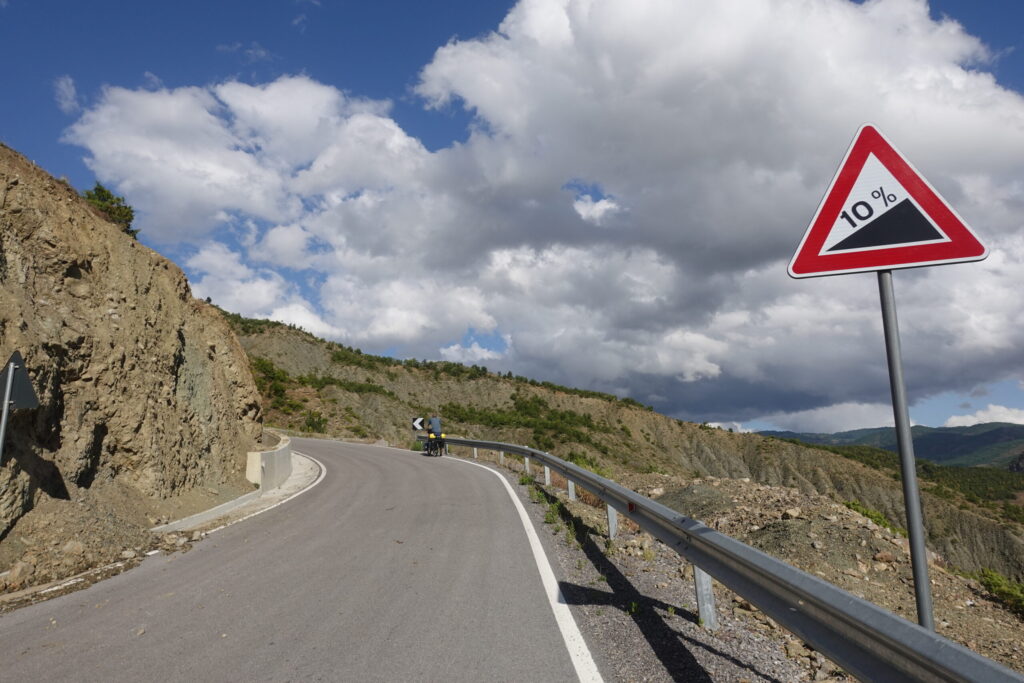
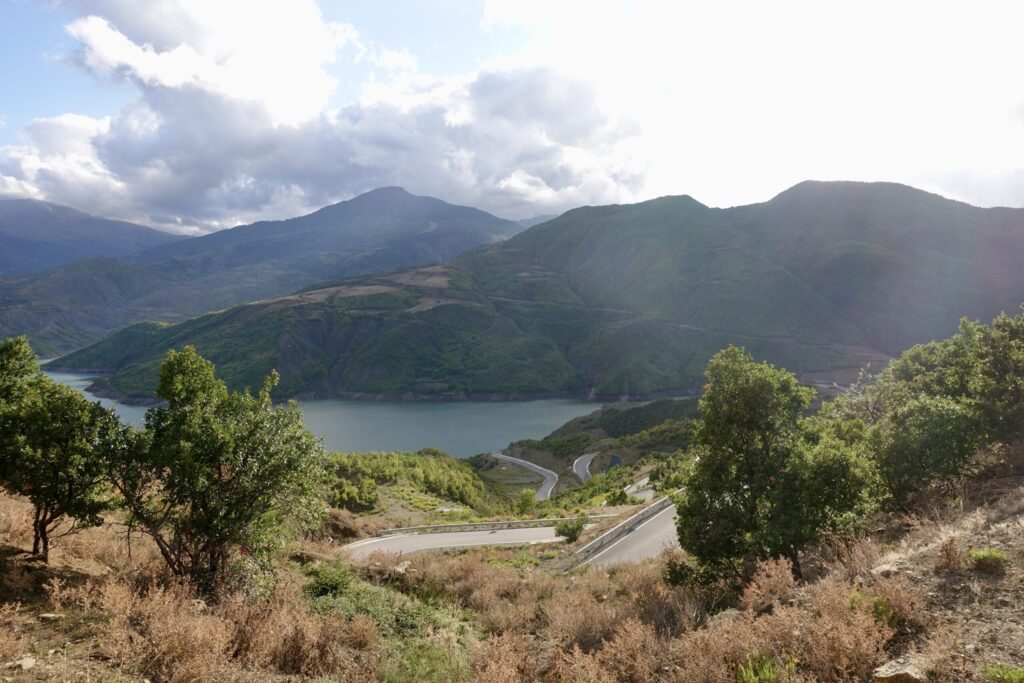
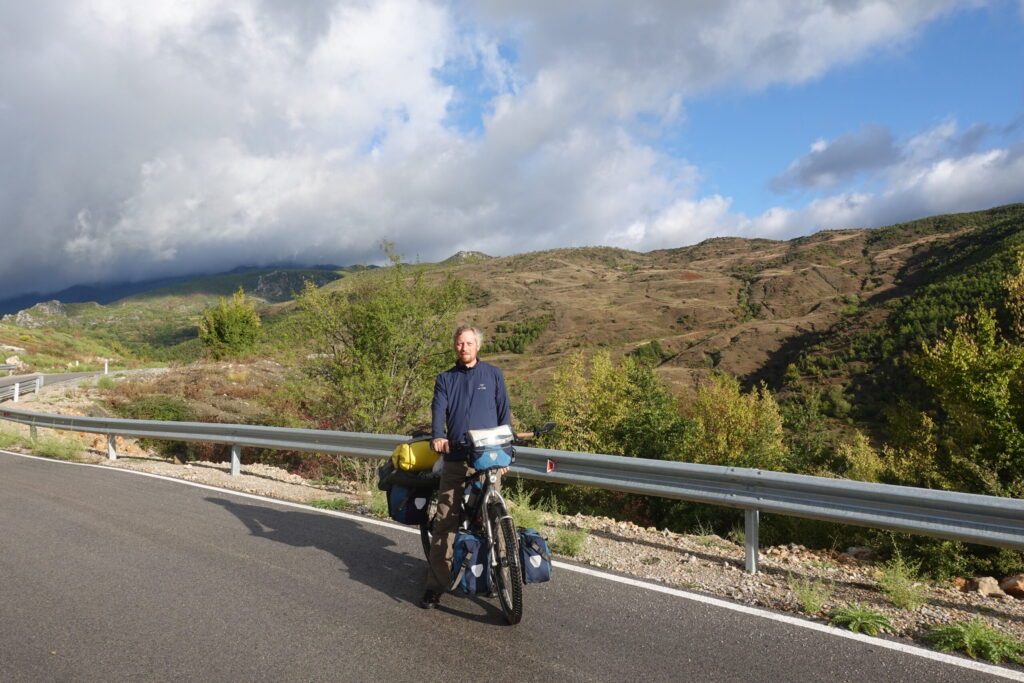
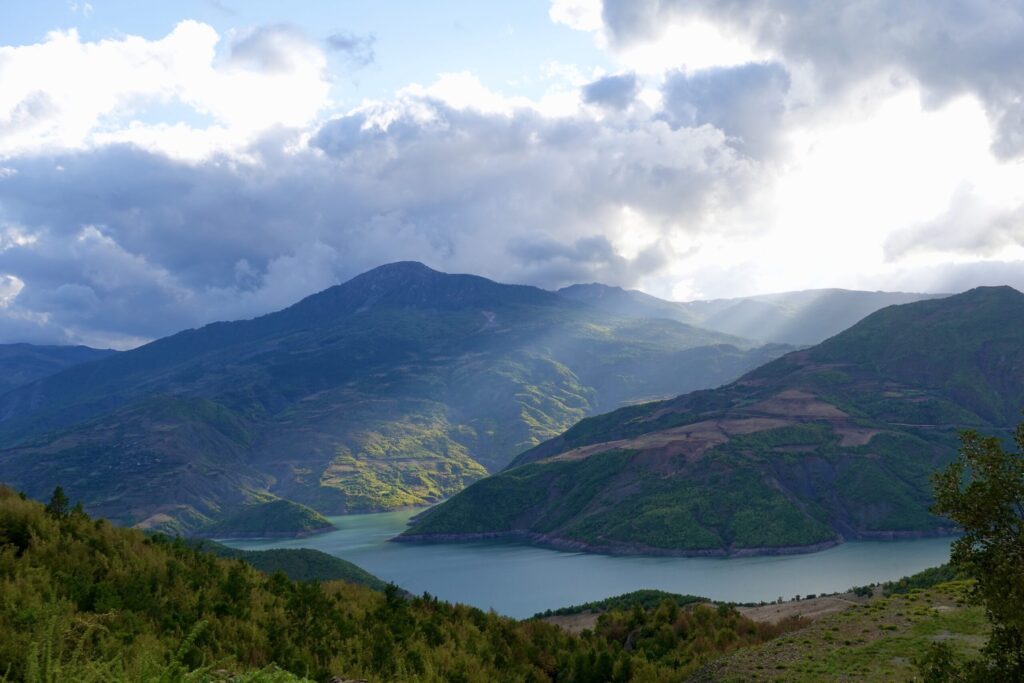

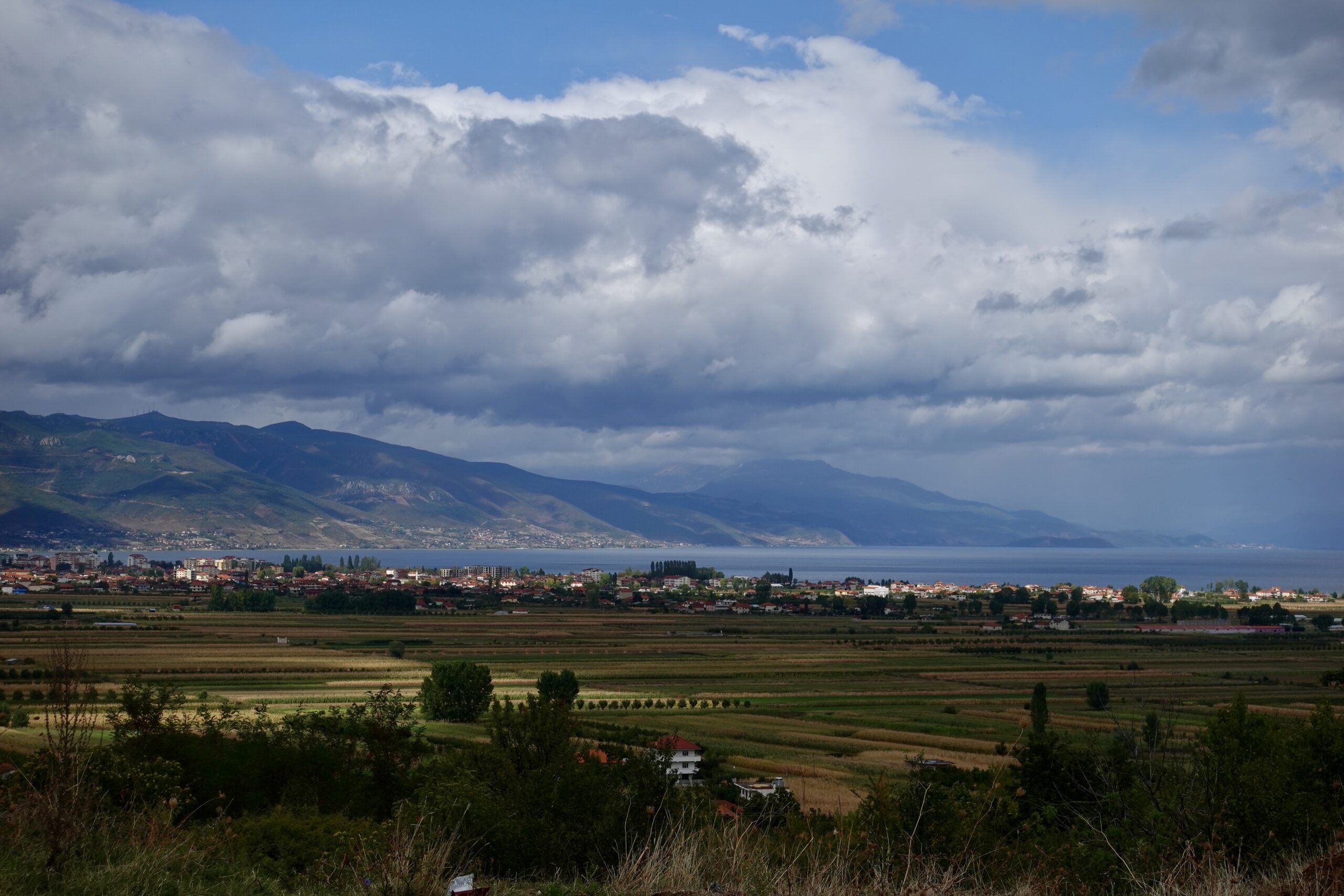
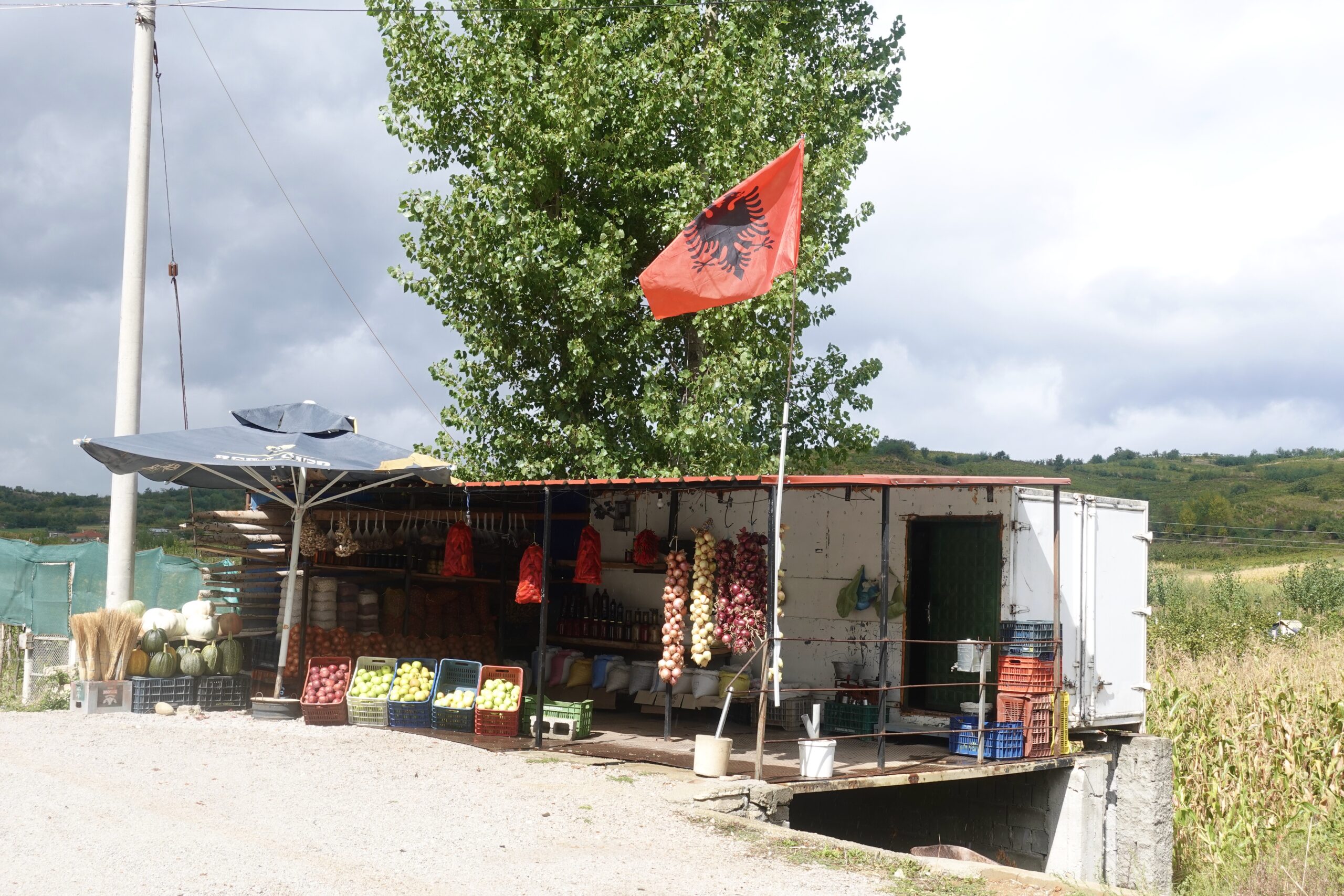

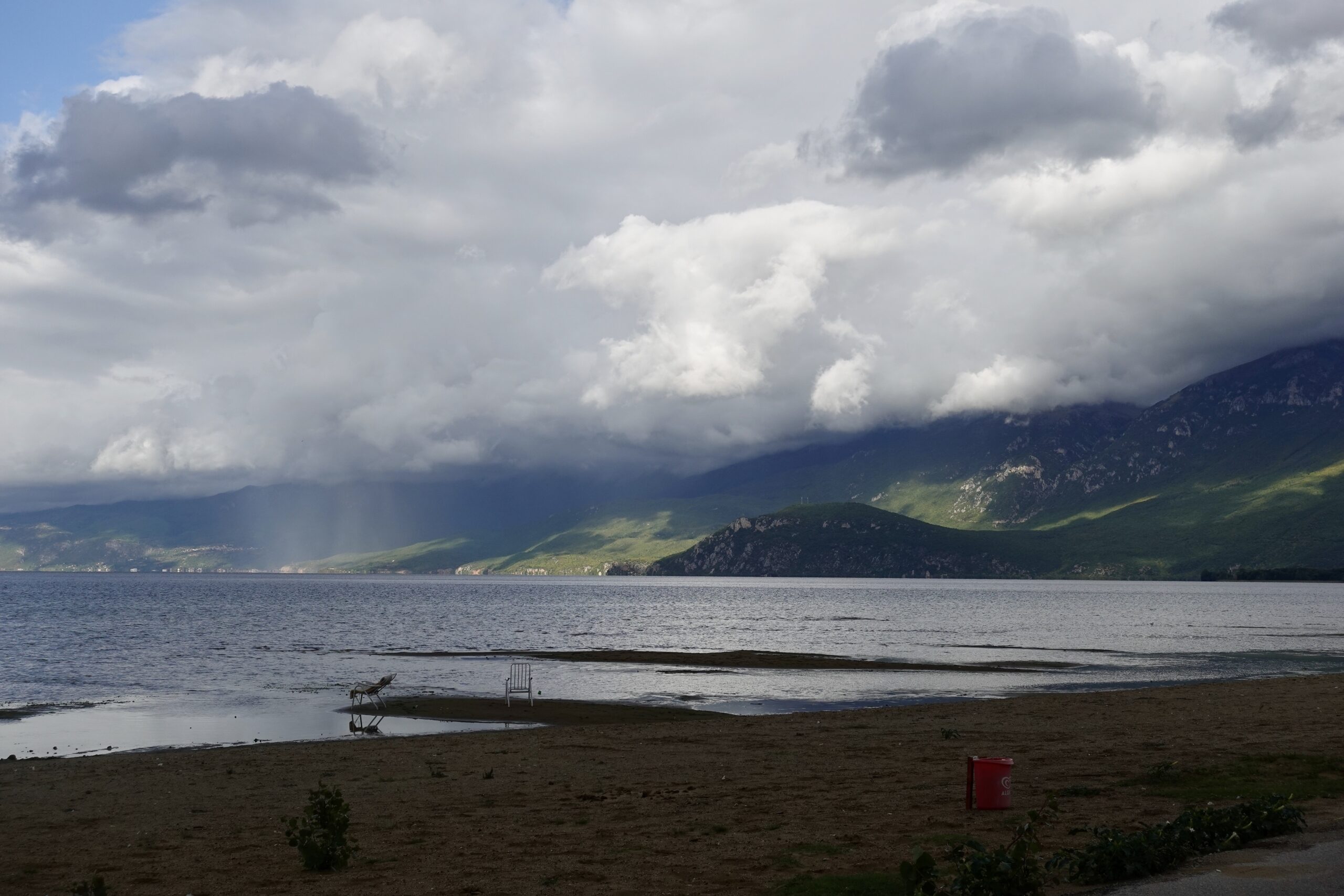

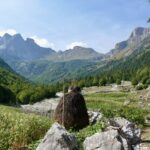
Leave a Reply